Qixing gongyuan Stock Photos and Images
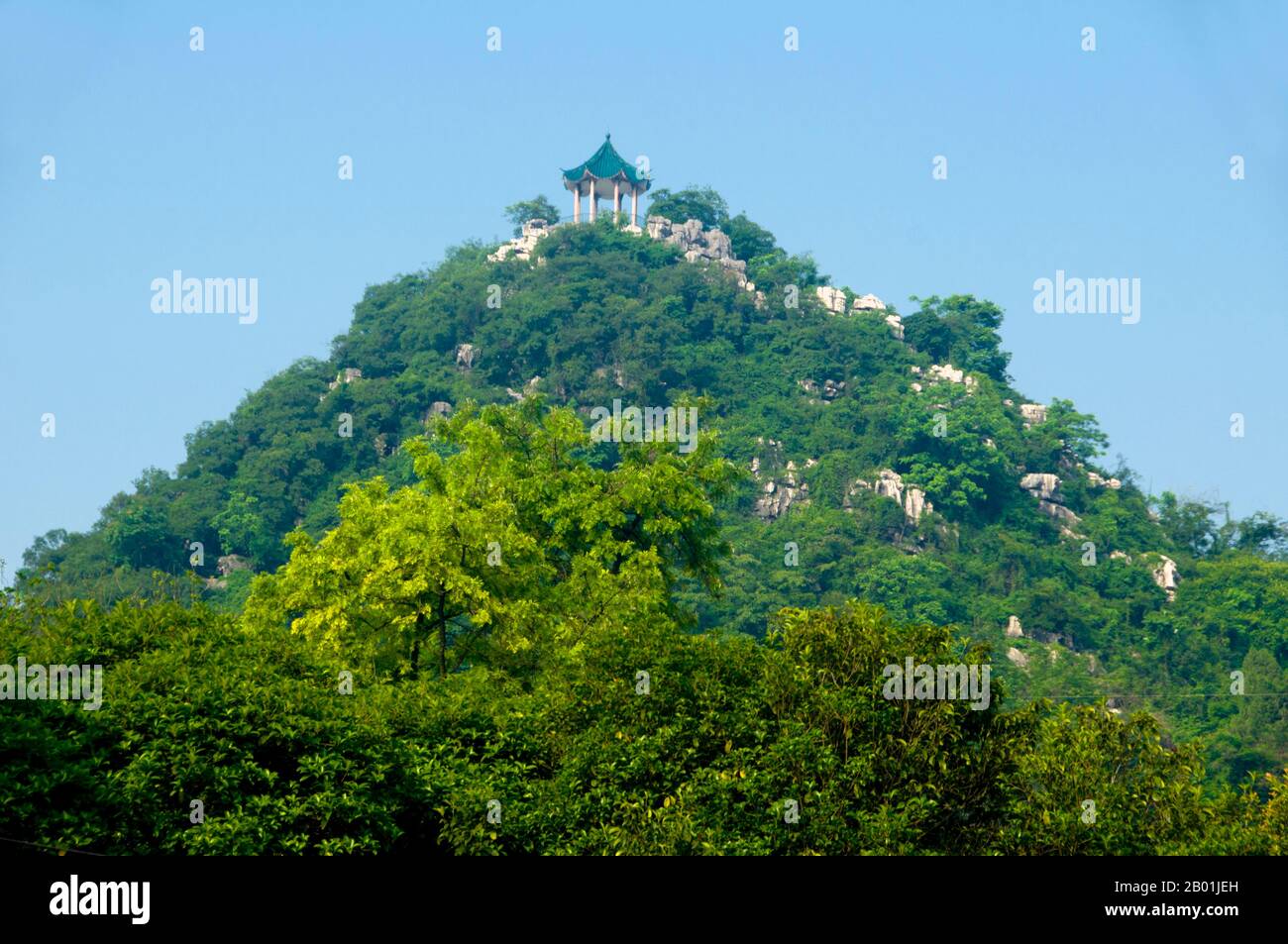 China: Qixing Gongyuan (Seven Star Park). Qixing Gongyuan or Seven Star Park gained its name from the position of its seven hills, which suggest the pattern of the Plough (Big Dipper) constellation. The park has been a tourist attraction for more than 1,000 years. The name Guilin means ‘Cassia Woods’ and is named after the osmanthus (cassia) blossoms that bloom throughout the autumn period. Guilin is the scene of China’s most famous landscapes, inspiring thousands of paintings over many centuries. They are often called the ‘finest mountains and rivers under heaven’. Stock Photohttps://www.alamy.com/image-license-details/?v=1https://www.alamy.com/china-qixing-gongyuan-seven-star-park-qixing-gongyuan-or-seven-star-park-gained-its-name-from-the-position-of-its-seven-hills-which-suggest-the-pattern-of-the-plough-big-dipper-constellation-the-park-has-been-a-tourist-attraction-for-more-than-1000-years-the-name-guilin-means-cassia-woods-and-is-named-after-the-osmanthus-cassia-blossoms-that-bloom-throughout-the-autumn-period-guilin-is-the-scene-of-chinas-most-famous-landscapes-inspiring-thousands-of-paintings-over-many-centuries-they-are-often-called-the-finest-mountains-and-rivers-under-heaven-image344243833.html
China: Qixing Gongyuan (Seven Star Park). Qixing Gongyuan or Seven Star Park gained its name from the position of its seven hills, which suggest the pattern of the Plough (Big Dipper) constellation. The park has been a tourist attraction for more than 1,000 years. The name Guilin means ‘Cassia Woods’ and is named after the osmanthus (cassia) blossoms that bloom throughout the autumn period. Guilin is the scene of China’s most famous landscapes, inspiring thousands of paintings over many centuries. They are often called the ‘finest mountains and rivers under heaven’. Stock Photohttps://www.alamy.com/image-license-details/?v=1https://www.alamy.com/china-qixing-gongyuan-seven-star-park-qixing-gongyuan-or-seven-star-park-gained-its-name-from-the-position-of-its-seven-hills-which-suggest-the-pattern-of-the-plough-big-dipper-constellation-the-park-has-been-a-tourist-attraction-for-more-than-1000-years-the-name-guilin-means-cassia-woods-and-is-named-after-the-osmanthus-cassia-blossoms-that-bloom-throughout-the-autumn-period-guilin-is-the-scene-of-chinas-most-famous-landscapes-inspiring-thousands-of-paintings-over-many-centuries-they-are-often-called-the-finest-mountains-and-rivers-under-heaven-image344243833.htmlRM2B01JEH–China: Qixing Gongyuan (Seven Star Park). Qixing Gongyuan or Seven Star Park gained its name from the position of its seven hills, which suggest the pattern of the Plough (Big Dipper) constellation. The park has been a tourist attraction for more than 1,000 years. The name Guilin means ‘Cassia Woods’ and is named after the osmanthus (cassia) blossoms that bloom throughout the autumn period. Guilin is the scene of China’s most famous landscapes, inspiring thousands of paintings over many centuries. They are often called the ‘finest mountains and rivers under heaven’.
 Children playing in 'Seven Star Park' (Qixing Gongyuan) in Guilin. Stock Photohttps://www.alamy.com/image-license-details/?v=1https://www.alamy.com/children-playing-in-seven-star-park-qixing-gongyuan-in-guilin-image69366254.html
Children playing in 'Seven Star Park' (Qixing Gongyuan) in Guilin. Stock Photohttps://www.alamy.com/image-license-details/?v=1https://www.alamy.com/children-playing-in-seven-star-park-qixing-gongyuan-in-guilin-image69366254.htmlRME0RWA6–Children playing in 'Seven Star Park' (Qixing Gongyuan) in Guilin.
 Traditional Chinese Pagoda and house surrounded by Lush Trees and Lake, Seven Star Park, Guilin Stock Photohttps://www.alamy.com/image-license-details/?v=1https://www.alamy.com/stock-photo-traditional-chinese-pagoda-and-house-surrounded-by-lush-trees-and-21624450.html
Traditional Chinese Pagoda and house surrounded by Lush Trees and Lake, Seven Star Park, Guilin Stock Photohttps://www.alamy.com/image-license-details/?v=1https://www.alamy.com/stock-photo-traditional-chinese-pagoda-and-house-surrounded-by-lush-trees-and-21624450.htmlRMB7525P–Traditional Chinese Pagoda and house surrounded by Lush Trees and Lake, Seven Star Park, Guilin
 China: Traffic on the Liberation Bridge with Seven Star Park in the background, Guilin, Guangxi Province. Qixing Gongyuan or Seven Star Park gained its name from the position of its seven hills, which suggest the pattern of the Plough (Big Dipper) constellation. The park has been a tourist attraction for more than 1,000 years. The name Guilin means ‘Cassia Woods’ and is named after the osmanthus (cassia) blossoms that bloom throughout the autumn period. Guilin is the scene of China’s most famous landscapes, inspiring thousands of paintings over many centuries. Stock Photohttps://www.alamy.com/image-license-details/?v=1https://www.alamy.com/china-traffic-on-the-liberation-bridge-with-seven-star-park-in-the-background-guilin-guangxi-province-qixing-gongyuan-or-seven-star-park-gained-its-name-from-the-position-of-its-seven-hills-which-suggest-the-pattern-of-the-plough-big-dipper-constellation-the-park-has-been-a-tourist-attraction-for-more-than-1000-years-the-name-guilin-means-cassia-woods-and-is-named-after-the-osmanthus-cassia-blossoms-that-bloom-throughout-the-autumn-period-guilin-is-the-scene-of-chinas-most-famous-landscapes-inspiring-thousands-of-paintings-over-many-centuries-image344243835.html
China: Traffic on the Liberation Bridge with Seven Star Park in the background, Guilin, Guangxi Province. Qixing Gongyuan or Seven Star Park gained its name from the position of its seven hills, which suggest the pattern of the Plough (Big Dipper) constellation. The park has been a tourist attraction for more than 1,000 years. The name Guilin means ‘Cassia Woods’ and is named after the osmanthus (cassia) blossoms that bloom throughout the autumn period. Guilin is the scene of China’s most famous landscapes, inspiring thousands of paintings over many centuries. Stock Photohttps://www.alamy.com/image-license-details/?v=1https://www.alamy.com/china-traffic-on-the-liberation-bridge-with-seven-star-park-in-the-background-guilin-guangxi-province-qixing-gongyuan-or-seven-star-park-gained-its-name-from-the-position-of-its-seven-hills-which-suggest-the-pattern-of-the-plough-big-dipper-constellation-the-park-has-been-a-tourist-attraction-for-more-than-1000-years-the-name-guilin-means-cassia-woods-and-is-named-after-the-osmanthus-cassia-blossoms-that-bloom-throughout-the-autumn-period-guilin-is-the-scene-of-chinas-most-famous-landscapes-inspiring-thousands-of-paintings-over-many-centuries-image344243835.htmlRM2B01JEK–China: Traffic on the Liberation Bridge with Seven Star Park in the background, Guilin, Guangxi Province. Qixing Gongyuan or Seven Star Park gained its name from the position of its seven hills, which suggest the pattern of the Plough (Big Dipper) constellation. The park has been a tourist attraction for more than 1,000 years. The name Guilin means ‘Cassia Woods’ and is named after the osmanthus (cassia) blossoms that bloom throughout the autumn period. Guilin is the scene of China’s most famous landscapes, inspiring thousands of paintings over many centuries.
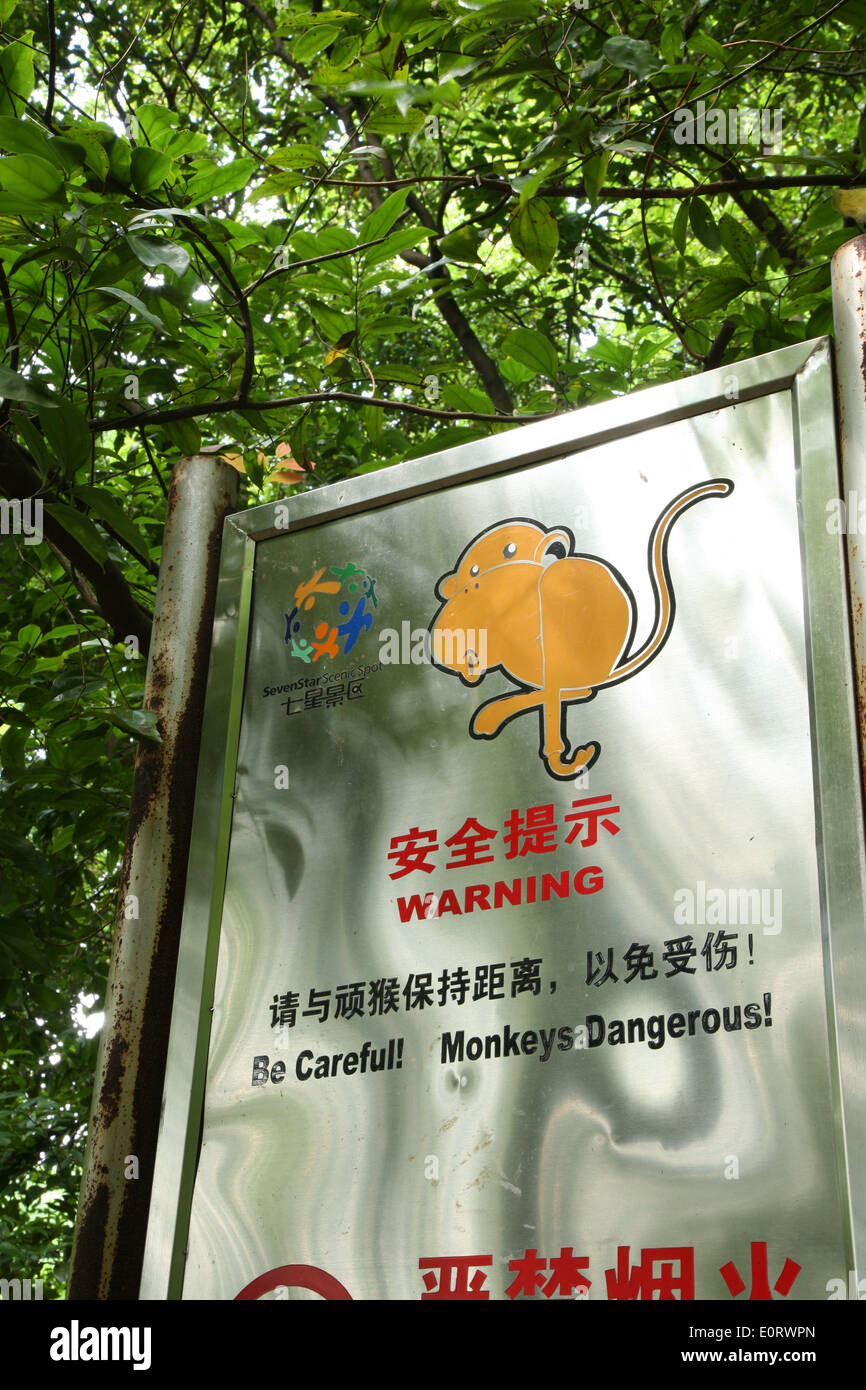 Warning sign for monkeys in the 'Seven Star Park' (Qixing Gongyuan) in Guilin. Stock Photohttps://www.alamy.com/image-license-details/?v=1https://www.alamy.com/warning-sign-for-monkeys-in-the-seven-star-park-qixing-gongyuan-in-image69366605.html
Warning sign for monkeys in the 'Seven Star Park' (Qixing Gongyuan) in Guilin. Stock Photohttps://www.alamy.com/image-license-details/?v=1https://www.alamy.com/warning-sign-for-monkeys-in-the-seven-star-park-qixing-gongyuan-in-image69366605.htmlRME0RWPN–Warning sign for monkeys in the 'Seven Star Park' (Qixing Gongyuan) in Guilin.
 Traditional Chinese Pagoda surrounded by Lush Trees and Lake, Seven Star Park, Guilin Stock Photohttps://www.alamy.com/image-license-details/?v=1https://www.alamy.com/stock-photo-traditional-chinese-pagoda-surrounded-by-lush-trees-and-lake-seven-21661420.html
Traditional Chinese Pagoda surrounded by Lush Trees and Lake, Seven Star Park, Guilin Stock Photohttps://www.alamy.com/image-license-details/?v=1https://www.alamy.com/stock-photo-traditional-chinese-pagoda-surrounded-by-lush-trees-and-lake-seven-21661420.htmlRMB76NA4–Traditional Chinese Pagoda surrounded by Lush Trees and Lake, Seven Star Park, Guilin
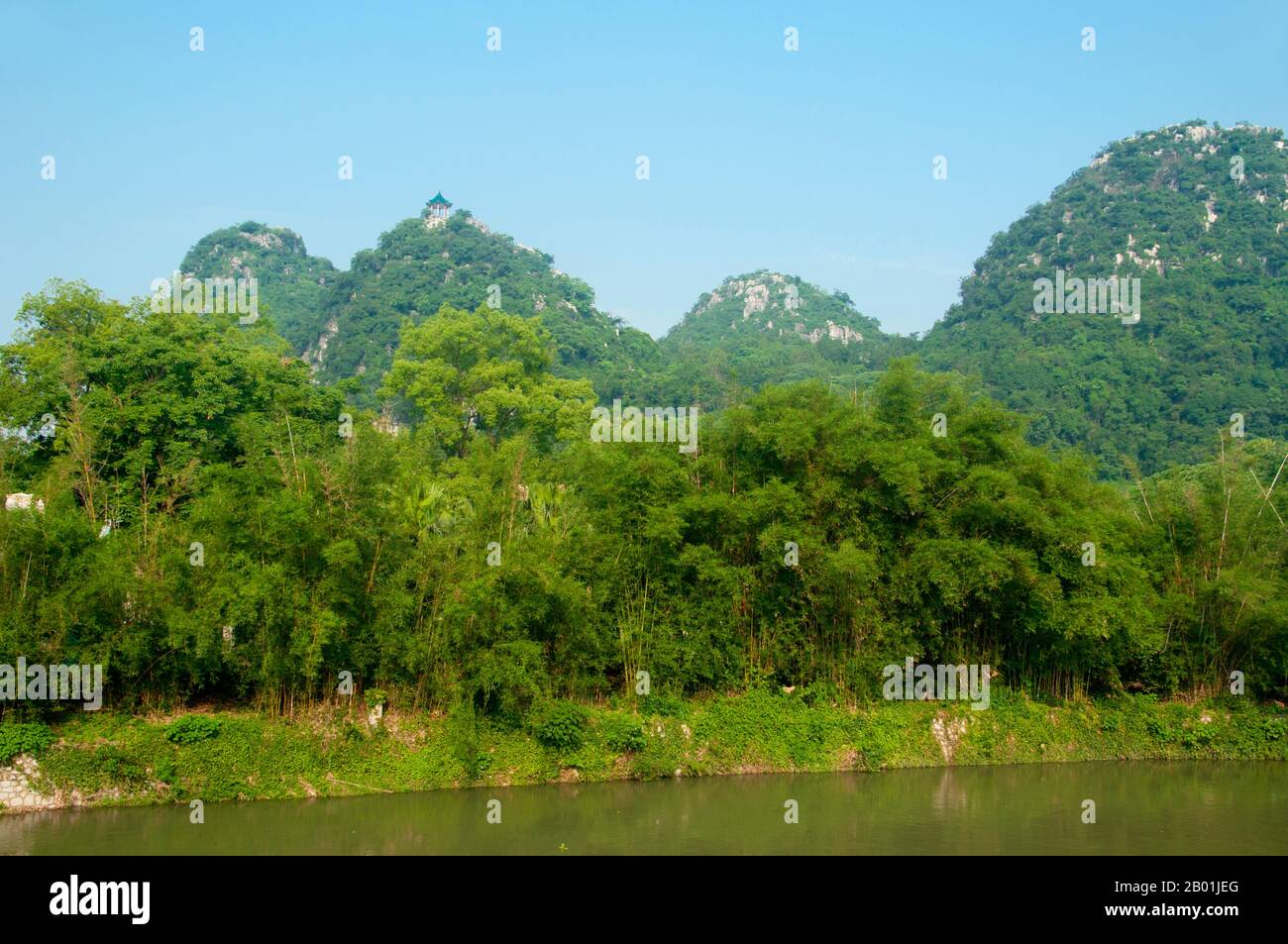 China: Qixing Gongyuan (Seven Star Park). Qixing Gongyuan or Seven Star Park gained its name from the position of its seven hills, which suggest the pattern of the Plough (Big Dipper) constellation. The park has been a tourist attraction for more than 1,000 years. The name Guilin means ‘Cassia Woods’ and is named after the osmanthus (cassia) blossoms that bloom throughout the autumn period. Guilin is the scene of China’s most famous landscapes, inspiring thousands of paintings over many centuries. They are often called the ‘finest mountains and rivers under heaven’. Stock Photohttps://www.alamy.com/image-license-details/?v=1https://www.alamy.com/china-qixing-gongyuan-seven-star-park-qixing-gongyuan-or-seven-star-park-gained-its-name-from-the-position-of-its-seven-hills-which-suggest-the-pattern-of-the-plough-big-dipper-constellation-the-park-has-been-a-tourist-attraction-for-more-than-1000-years-the-name-guilin-means-cassia-woods-and-is-named-after-the-osmanthus-cassia-blossoms-that-bloom-throughout-the-autumn-period-guilin-is-the-scene-of-chinas-most-famous-landscapes-inspiring-thousands-of-paintings-over-many-centuries-they-are-often-called-the-finest-mountains-and-rivers-under-heaven-image344243832.html
China: Qixing Gongyuan (Seven Star Park). Qixing Gongyuan or Seven Star Park gained its name from the position of its seven hills, which suggest the pattern of the Plough (Big Dipper) constellation. The park has been a tourist attraction for more than 1,000 years. The name Guilin means ‘Cassia Woods’ and is named after the osmanthus (cassia) blossoms that bloom throughout the autumn period. Guilin is the scene of China’s most famous landscapes, inspiring thousands of paintings over many centuries. They are often called the ‘finest mountains and rivers under heaven’. Stock Photohttps://www.alamy.com/image-license-details/?v=1https://www.alamy.com/china-qixing-gongyuan-seven-star-park-qixing-gongyuan-or-seven-star-park-gained-its-name-from-the-position-of-its-seven-hills-which-suggest-the-pattern-of-the-plough-big-dipper-constellation-the-park-has-been-a-tourist-attraction-for-more-than-1000-years-the-name-guilin-means-cassia-woods-and-is-named-after-the-osmanthus-cassia-blossoms-that-bloom-throughout-the-autumn-period-guilin-is-the-scene-of-chinas-most-famous-landscapes-inspiring-thousands-of-paintings-over-many-centuries-they-are-often-called-the-finest-mountains-and-rivers-under-heaven-image344243832.htmlRM2B01JEG–China: Qixing Gongyuan (Seven Star Park). Qixing Gongyuan or Seven Star Park gained its name from the position of its seven hills, which suggest the pattern of the Plough (Big Dipper) constellation. The park has been a tourist attraction for more than 1,000 years. The name Guilin means ‘Cassia Woods’ and is named after the osmanthus (cassia) blossoms that bloom throughout the autumn period. Guilin is the scene of China’s most famous landscapes, inspiring thousands of paintings over many centuries. They are often called the ‘finest mountains and rivers under heaven’.
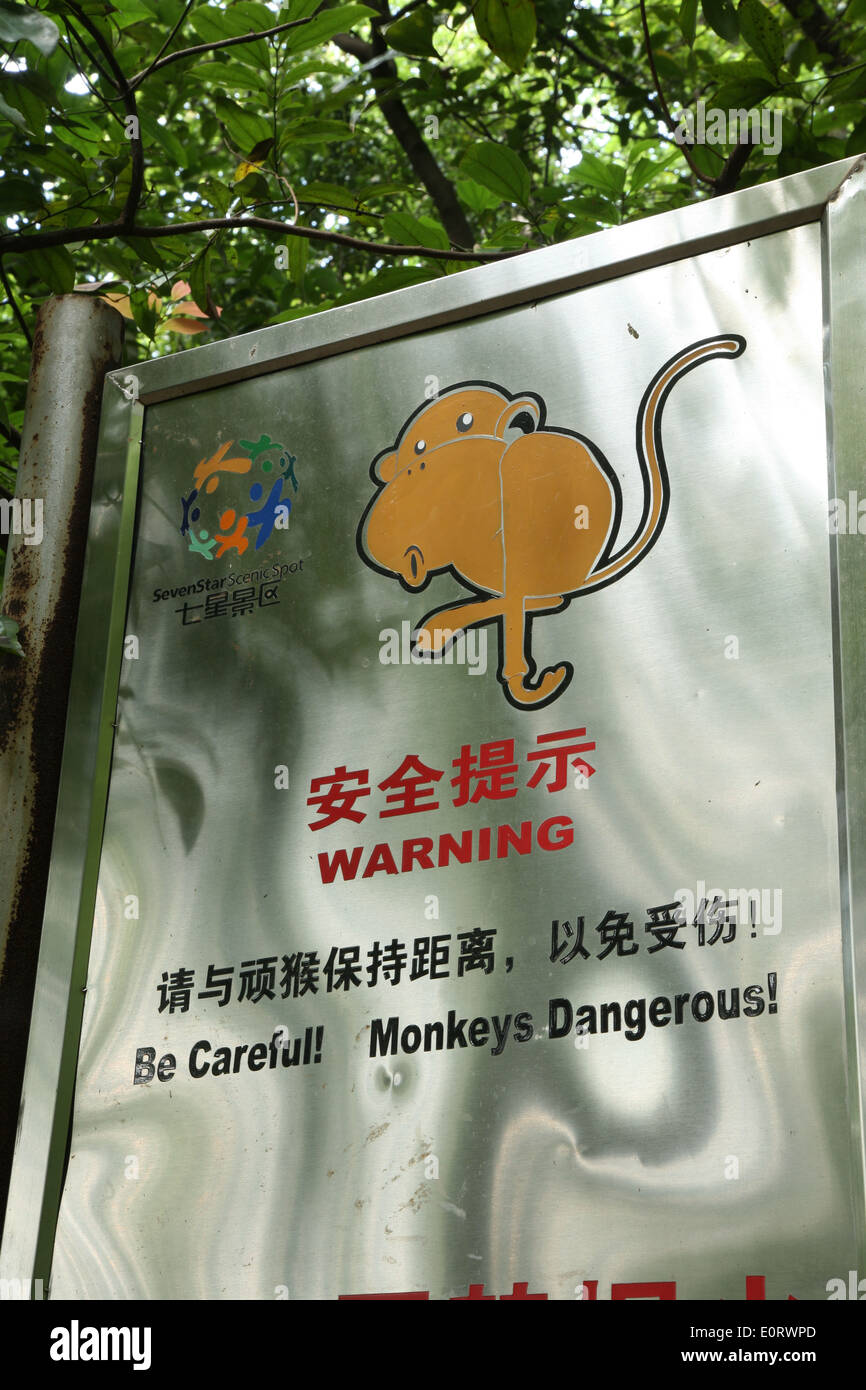 Warning sign for monkeys in the 'Seven Star Park' (Qixing Gongyuan) in Guilin. Stock Photohttps://www.alamy.com/image-license-details/?v=1https://www.alamy.com/warning-sign-for-monkeys-in-the-seven-star-park-qixing-gongyuan-in-image69366597.html
Warning sign for monkeys in the 'Seven Star Park' (Qixing Gongyuan) in Guilin. Stock Photohttps://www.alamy.com/image-license-details/?v=1https://www.alamy.com/warning-sign-for-monkeys-in-the-seven-star-park-qixing-gongyuan-in-image69366597.htmlRME0RWPD–Warning sign for monkeys in the 'Seven Star Park' (Qixing Gongyuan) in Guilin.
 China: Waterfall, Qixing Gongyuan (Seven Star Park), Guilin. Qixing Gongyuan or Seven Star Park gained its name from the position of its seven hills, which suggest the pattern of the Plough (Big Dipper) constellation. The park has been a tourist attraction for more than 1,000 years. The name Guilin means ‘Cassia Woods’ and is named after the osmanthus (cassia) blossoms that bloom throughout the autumn period. Guilin is the scene of China’s most famous landscapes, inspiring thousands of paintings over many centuries. They are often called the ‘finest mountains and rivers under heaven’. Stock Photohttps://www.alamy.com/image-license-details/?v=1https://www.alamy.com/china-waterfall-qixing-gongyuan-seven-star-park-guilin-qixing-gongyuan-or-seven-star-park-gained-its-name-from-the-position-of-its-seven-hills-which-suggest-the-pattern-of-the-plough-big-dipper-constellation-the-park-has-been-a-tourist-attraction-for-more-than-1000-years-the-name-guilin-means-cassia-woods-and-is-named-after-the-osmanthus-cassia-blossoms-that-bloom-throughout-the-autumn-period-guilin-is-the-scene-of-chinas-most-famous-landscapes-inspiring-thousands-of-paintings-over-many-centuries-they-are-often-called-the-finest-mountains-and-rivers-under-heaven-image344243812.html
China: Waterfall, Qixing Gongyuan (Seven Star Park), Guilin. Qixing Gongyuan or Seven Star Park gained its name from the position of its seven hills, which suggest the pattern of the Plough (Big Dipper) constellation. The park has been a tourist attraction for more than 1,000 years. The name Guilin means ‘Cassia Woods’ and is named after the osmanthus (cassia) blossoms that bloom throughout the autumn period. Guilin is the scene of China’s most famous landscapes, inspiring thousands of paintings over many centuries. They are often called the ‘finest mountains and rivers under heaven’. Stock Photohttps://www.alamy.com/image-license-details/?v=1https://www.alamy.com/china-waterfall-qixing-gongyuan-seven-star-park-guilin-qixing-gongyuan-or-seven-star-park-gained-its-name-from-the-position-of-its-seven-hills-which-suggest-the-pattern-of-the-plough-big-dipper-constellation-the-park-has-been-a-tourist-attraction-for-more-than-1000-years-the-name-guilin-means-cassia-woods-and-is-named-after-the-osmanthus-cassia-blossoms-that-bloom-throughout-the-autumn-period-guilin-is-the-scene-of-chinas-most-famous-landscapes-inspiring-thousands-of-paintings-over-many-centuries-they-are-often-called-the-finest-mountains-and-rivers-under-heaven-image344243812.htmlRM2B01JDT–China: Waterfall, Qixing Gongyuan (Seven Star Park), Guilin. Qixing Gongyuan or Seven Star Park gained its name from the position of its seven hills, which suggest the pattern of the Plough (Big Dipper) constellation. The park has been a tourist attraction for more than 1,000 years. The name Guilin means ‘Cassia Woods’ and is named after the osmanthus (cassia) blossoms that bloom throughout the autumn period. Guilin is the scene of China’s most famous landscapes, inspiring thousands of paintings over many centuries. They are often called the ‘finest mountains and rivers under heaven’.
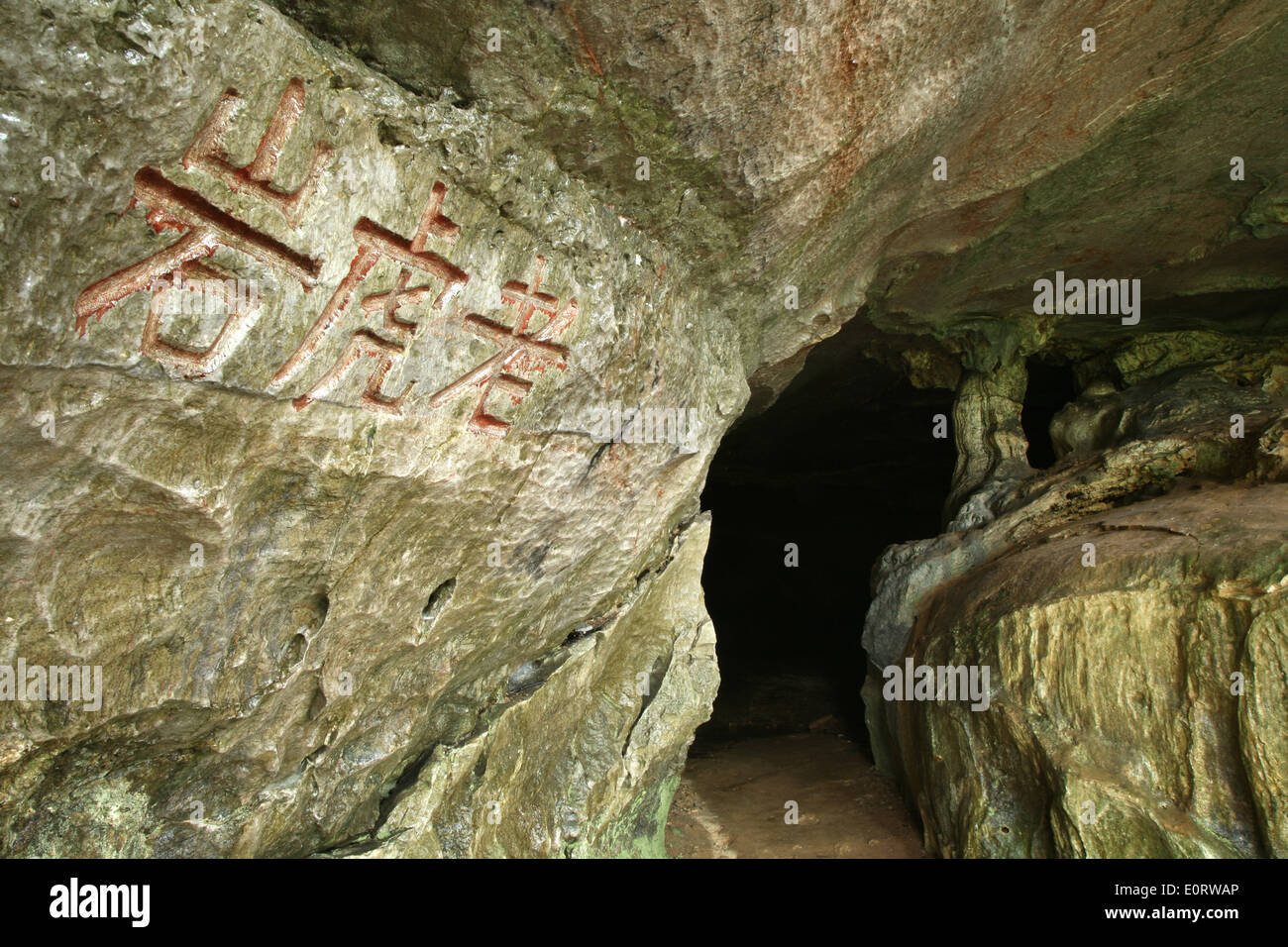 Entrance to a small cave in the 'Seven Star Park' (Qixing Gongyuan) in Guilin. Stock Photohttps://www.alamy.com/image-license-details/?v=1https://www.alamy.com/entrance-to-a-small-cave-in-the-seven-star-park-qixing-gongyuan-in-image69366270.html
Entrance to a small cave in the 'Seven Star Park' (Qixing Gongyuan) in Guilin. Stock Photohttps://www.alamy.com/image-license-details/?v=1https://www.alamy.com/entrance-to-a-small-cave-in-the-seven-star-park-qixing-gongyuan-in-image69366270.htmlRME0RWAP–Entrance to a small cave in the 'Seven Star Park' (Qixing Gongyuan) in Guilin.
 China: Camel Hill, Qixing Gongyuan (Seven Star Park). Qixing Gongyuan or Seven Star Park gained its name from the position of its seven hills, which suggest the pattern of the Plough (Big Dipper) constellation. The park has been a tourist attraction for more than 1,000 years. The name Guilin means ‘Cassia Woods’ and is named after the osmanthus (cassia) blossoms that bloom throughout the autumn period. Guilin is the scene of China’s most famous landscapes, inspiring thousands of paintings over many centuries. They are often called the ‘finest mountains and rivers under heaven’. Stock Photohttps://www.alamy.com/image-license-details/?v=1https://www.alamy.com/china-camel-hill-qixing-gongyuan-seven-star-park-qixing-gongyuan-or-seven-star-park-gained-its-name-from-the-position-of-its-seven-hills-which-suggest-the-pattern-of-the-plough-big-dipper-constellation-the-park-has-been-a-tourist-attraction-for-more-than-1000-years-the-name-guilin-means-cassia-woods-and-is-named-after-the-osmanthus-cassia-blossoms-that-bloom-throughout-the-autumn-period-guilin-is-the-scene-of-chinas-most-famous-landscapes-inspiring-thousands-of-paintings-over-many-centuries-they-are-often-called-the-finest-mountains-and-rivers-under-heaven-image344243831.html
China: Camel Hill, Qixing Gongyuan (Seven Star Park). Qixing Gongyuan or Seven Star Park gained its name from the position of its seven hills, which suggest the pattern of the Plough (Big Dipper) constellation. The park has been a tourist attraction for more than 1,000 years. The name Guilin means ‘Cassia Woods’ and is named after the osmanthus (cassia) blossoms that bloom throughout the autumn period. Guilin is the scene of China’s most famous landscapes, inspiring thousands of paintings over many centuries. They are often called the ‘finest mountains and rivers under heaven’. Stock Photohttps://www.alamy.com/image-license-details/?v=1https://www.alamy.com/china-camel-hill-qixing-gongyuan-seven-star-park-qixing-gongyuan-or-seven-star-park-gained-its-name-from-the-position-of-its-seven-hills-which-suggest-the-pattern-of-the-plough-big-dipper-constellation-the-park-has-been-a-tourist-attraction-for-more-than-1000-years-the-name-guilin-means-cassia-woods-and-is-named-after-the-osmanthus-cassia-blossoms-that-bloom-throughout-the-autumn-period-guilin-is-the-scene-of-chinas-most-famous-landscapes-inspiring-thousands-of-paintings-over-many-centuries-they-are-often-called-the-finest-mountains-and-rivers-under-heaven-image344243831.htmlRM2B01JEF–China: Camel Hill, Qixing Gongyuan (Seven Star Park). Qixing Gongyuan or Seven Star Park gained its name from the position of its seven hills, which suggest the pattern of the Plough (Big Dipper) constellation. The park has been a tourist attraction for more than 1,000 years. The name Guilin means ‘Cassia Woods’ and is named after the osmanthus (cassia) blossoms that bloom throughout the autumn period. Guilin is the scene of China’s most famous landscapes, inspiring thousands of paintings over many centuries. They are often called the ‘finest mountains and rivers under heaven’.
 statue of a Chinese Macaque monkey in the 'Seven Star Park' (Qixing Gongyuan) in Guilin. Stock Photohttps://www.alamy.com/image-license-details/?v=1https://www.alamy.com/statue-of-a-chinese-macaque-monkey-in-the-seven-star-park-qixing-gongyuan-image69366045.html
statue of a Chinese Macaque monkey in the 'Seven Star Park' (Qixing Gongyuan) in Guilin. Stock Photohttps://www.alamy.com/image-license-details/?v=1https://www.alamy.com/statue-of-a-chinese-macaque-monkey-in-the-seven-star-park-qixing-gongyuan-image69366045.htmlRME0RW2N–statue of a Chinese Macaque monkey in the 'Seven Star Park' (Qixing Gongyuan) in Guilin.
 China: Waterfall, Qixing Gongyuan (Seven Star Park), Guilin. Qixing Gongyuan or Seven Star Park gained its name from the position of its seven hills, which suggest the pattern of the Plough (Big Dipper) constellation. The park has been a tourist attraction for more than 1,000 years. The name Guilin means ‘Cassia Woods’ and is named after the osmanthus (cassia) blossoms that bloom throughout the autumn period. Guilin is the scene of China’s most famous landscapes, inspiring thousands of paintings over many centuries. They are often called the ‘finest mountains and rivers under heaven’. Stock Photohttps://www.alamy.com/image-license-details/?v=1https://www.alamy.com/china-waterfall-qixing-gongyuan-seven-star-park-guilin-qixing-gongyuan-or-seven-star-park-gained-its-name-from-the-position-of-its-seven-hills-which-suggest-the-pattern-of-the-plough-big-dipper-constellation-the-park-has-been-a-tourist-attraction-for-more-than-1000-years-the-name-guilin-means-cassia-woods-and-is-named-after-the-osmanthus-cassia-blossoms-that-bloom-throughout-the-autumn-period-guilin-is-the-scene-of-chinas-most-famous-landscapes-inspiring-thousands-of-paintings-over-many-centuries-they-are-often-called-the-finest-mountains-and-rivers-under-heaven-image344243774.html
China: Waterfall, Qixing Gongyuan (Seven Star Park), Guilin. Qixing Gongyuan or Seven Star Park gained its name from the position of its seven hills, which suggest the pattern of the Plough (Big Dipper) constellation. The park has been a tourist attraction for more than 1,000 years. The name Guilin means ‘Cassia Woods’ and is named after the osmanthus (cassia) blossoms that bloom throughout the autumn period. Guilin is the scene of China’s most famous landscapes, inspiring thousands of paintings over many centuries. They are often called the ‘finest mountains and rivers under heaven’. Stock Photohttps://www.alamy.com/image-license-details/?v=1https://www.alamy.com/china-waterfall-qixing-gongyuan-seven-star-park-guilin-qixing-gongyuan-or-seven-star-park-gained-its-name-from-the-position-of-its-seven-hills-which-suggest-the-pattern-of-the-plough-big-dipper-constellation-the-park-has-been-a-tourist-attraction-for-more-than-1000-years-the-name-guilin-means-cassia-woods-and-is-named-after-the-osmanthus-cassia-blossoms-that-bloom-throughout-the-autumn-period-guilin-is-the-scene-of-chinas-most-famous-landscapes-inspiring-thousands-of-paintings-over-many-centuries-they-are-often-called-the-finest-mountains-and-rivers-under-heaven-image344243774.htmlRM2B01JCE–China: Waterfall, Qixing Gongyuan (Seven Star Park), Guilin. Qixing Gongyuan or Seven Star Park gained its name from the position of its seven hills, which suggest the pattern of the Plough (Big Dipper) constellation. The park has been a tourist attraction for more than 1,000 years. The name Guilin means ‘Cassia Woods’ and is named after the osmanthus (cassia) blossoms that bloom throughout the autumn period. Guilin is the scene of China’s most famous landscapes, inspiring thousands of paintings over many centuries. They are often called the ‘finest mountains and rivers under heaven’.
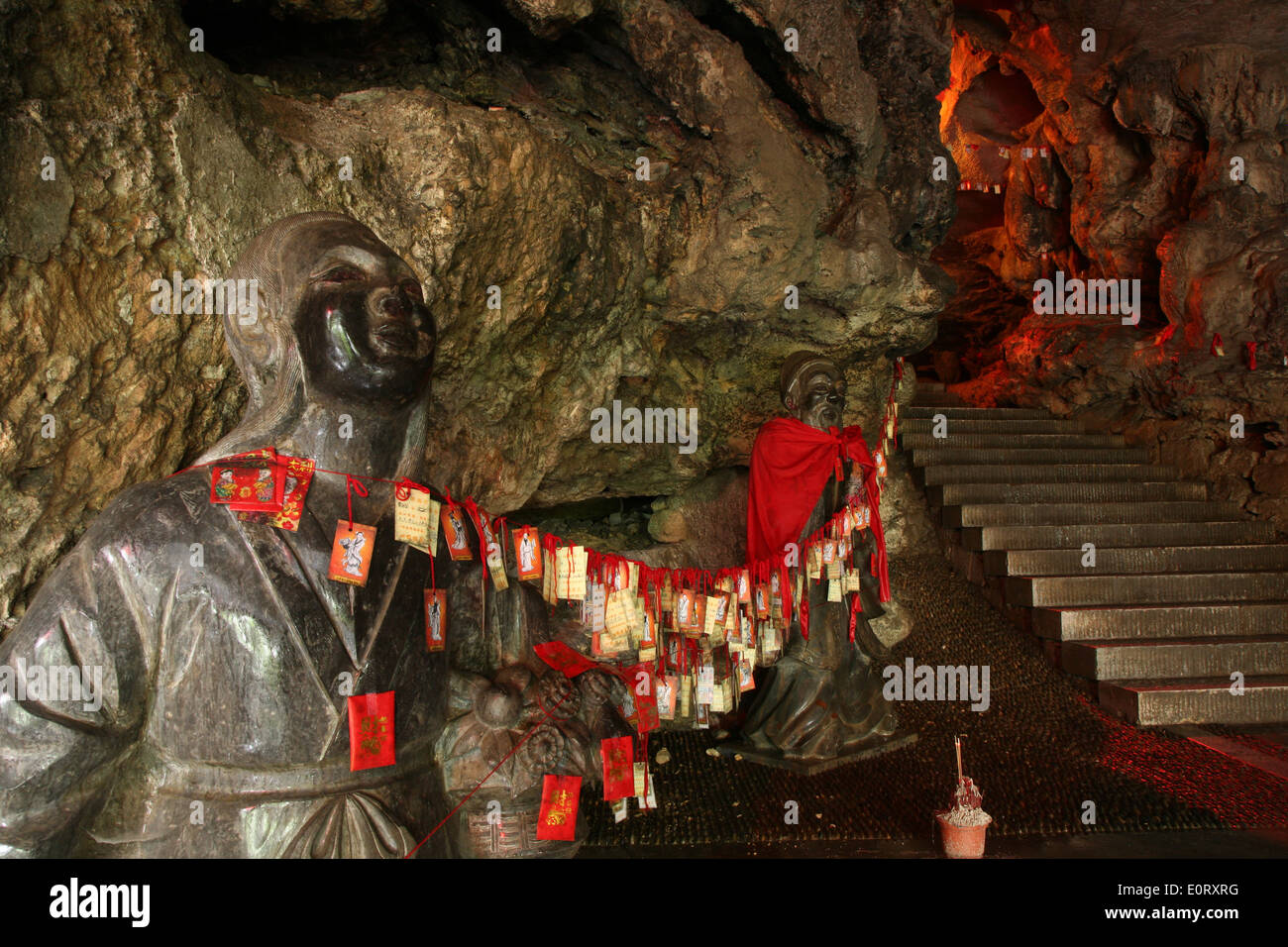 Side entrance passage to 'Seven Star Cave', in 'Seven Star Park' (Qixing Gongyuan) in Guilin. Stock Photohttps://www.alamy.com/image-license-details/?v=1https://www.alamy.com/side-entrance-passage-to-seven-star-cave-in-seven-star-park-qixing-image69367412.html
Side entrance passage to 'Seven Star Cave', in 'Seven Star Park' (Qixing Gongyuan) in Guilin. Stock Photohttps://www.alamy.com/image-license-details/?v=1https://www.alamy.com/side-entrance-passage-to-seven-star-cave-in-seven-star-park-qixing-image69367412.htmlRME0RXRG–Side entrance passage to 'Seven Star Cave', in 'Seven Star Park' (Qixing Gongyuan) in Guilin.
 China: Camel Hill, Qixing Gongyuan (Seven Star Park). Qixing Gongyuan or Seven Star Park gained its name from the position of its seven hills, which suggest the pattern of the Plough (Big Dipper) constellation. The park has been a tourist attraction for more than 1,000 years. The name Guilin means ‘Cassia Woods’ and is named after the osmanthus (cassia) blossoms that bloom throughout the autumn period. Guilin is the scene of China’s most famous landscapes, inspiring thousands of paintings over many centuries. They are often called the ‘finest mountains and rivers under heaven’. Stock Photohttps://www.alamy.com/image-license-details/?v=1https://www.alamy.com/china-camel-hill-qixing-gongyuan-seven-star-park-qixing-gongyuan-or-seven-star-park-gained-its-name-from-the-position-of-its-seven-hills-which-suggest-the-pattern-of-the-plough-big-dipper-constellation-the-park-has-been-a-tourist-attraction-for-more-than-1000-years-the-name-guilin-means-cassia-woods-and-is-named-after-the-osmanthus-cassia-blossoms-that-bloom-throughout-the-autumn-period-guilin-is-the-scene-of-chinas-most-famous-landscapes-inspiring-thousands-of-paintings-over-many-centuries-they-are-often-called-the-finest-mountains-and-rivers-under-heaven-image344243827.html
China: Camel Hill, Qixing Gongyuan (Seven Star Park). Qixing Gongyuan or Seven Star Park gained its name from the position of its seven hills, which suggest the pattern of the Plough (Big Dipper) constellation. The park has been a tourist attraction for more than 1,000 years. The name Guilin means ‘Cassia Woods’ and is named after the osmanthus (cassia) blossoms that bloom throughout the autumn period. Guilin is the scene of China’s most famous landscapes, inspiring thousands of paintings over many centuries. They are often called the ‘finest mountains and rivers under heaven’. Stock Photohttps://www.alamy.com/image-license-details/?v=1https://www.alamy.com/china-camel-hill-qixing-gongyuan-seven-star-park-qixing-gongyuan-or-seven-star-park-gained-its-name-from-the-position-of-its-seven-hills-which-suggest-the-pattern-of-the-plough-big-dipper-constellation-the-park-has-been-a-tourist-attraction-for-more-than-1000-years-the-name-guilin-means-cassia-woods-and-is-named-after-the-osmanthus-cassia-blossoms-that-bloom-throughout-the-autumn-period-guilin-is-the-scene-of-chinas-most-famous-landscapes-inspiring-thousands-of-paintings-over-many-centuries-they-are-often-called-the-finest-mountains-and-rivers-under-heaven-image344243827.htmlRM2B01JEB–China: Camel Hill, Qixing Gongyuan (Seven Star Park). Qixing Gongyuan or Seven Star Park gained its name from the position of its seven hills, which suggest the pattern of the Plough (Big Dipper) constellation. The park has been a tourist attraction for more than 1,000 years. The name Guilin means ‘Cassia Woods’ and is named after the osmanthus (cassia) blossoms that bloom throughout the autumn period. Guilin is the scene of China’s most famous landscapes, inspiring thousands of paintings over many centuries. They are often called the ‘finest mountains and rivers under heaven’.
 Rock formations in the 'Seven Star Park' (Qixing Gongyuan), on the eastern side of the river in Guilin. Stock Photohttps://www.alamy.com/image-license-details/?v=1https://www.alamy.com/rock-formations-in-the-seven-star-park-qixing-gongyuan-on-the-eastern-image69366260.html
Rock formations in the 'Seven Star Park' (Qixing Gongyuan), on the eastern side of the river in Guilin. Stock Photohttps://www.alamy.com/image-license-details/?v=1https://www.alamy.com/rock-formations-in-the-seven-star-park-qixing-gongyuan-on-the-eastern-image69366260.htmlRME0RWAC–Rock formations in the 'Seven Star Park' (Qixing Gongyuan), on the eastern side of the river in Guilin.
 China: Waterfall, Qixing Gongyuan (Seven Star Park), Guilin. Qixing Gongyuan or Seven Star Park gained its name from the position of its seven hills, which suggest the pattern of the Plough (Big Dipper) constellation. The park has been a tourist attraction for more than 1,000 years. The name Guilin means ‘Cassia Woods’ and is named after the osmanthus (cassia) blossoms that bloom throughout the autumn period. Guilin is the scene of China’s most famous landscapes, inspiring thousands of paintings over many centuries. They are often called the ‘finest mountains and rivers under heaven’. Stock Photohttps://www.alamy.com/image-license-details/?v=1https://www.alamy.com/china-waterfall-qixing-gongyuan-seven-star-park-guilin-qixing-gongyuan-or-seven-star-park-gained-its-name-from-the-position-of-its-seven-hills-which-suggest-the-pattern-of-the-plough-big-dipper-constellation-the-park-has-been-a-tourist-attraction-for-more-than-1000-years-the-name-guilin-means-cassia-woods-and-is-named-after-the-osmanthus-cassia-blossoms-that-bloom-throughout-the-autumn-period-guilin-is-the-scene-of-chinas-most-famous-landscapes-inspiring-thousands-of-paintings-over-many-centuries-they-are-often-called-the-finest-mountains-and-rivers-under-heaven-image344243771.html
China: Waterfall, Qixing Gongyuan (Seven Star Park), Guilin. Qixing Gongyuan or Seven Star Park gained its name from the position of its seven hills, which suggest the pattern of the Plough (Big Dipper) constellation. The park has been a tourist attraction for more than 1,000 years. The name Guilin means ‘Cassia Woods’ and is named after the osmanthus (cassia) blossoms that bloom throughout the autumn period. Guilin is the scene of China’s most famous landscapes, inspiring thousands of paintings over many centuries. They are often called the ‘finest mountains and rivers under heaven’. Stock Photohttps://www.alamy.com/image-license-details/?v=1https://www.alamy.com/china-waterfall-qixing-gongyuan-seven-star-park-guilin-qixing-gongyuan-or-seven-star-park-gained-its-name-from-the-position-of-its-seven-hills-which-suggest-the-pattern-of-the-plough-big-dipper-constellation-the-park-has-been-a-tourist-attraction-for-more-than-1000-years-the-name-guilin-means-cassia-woods-and-is-named-after-the-osmanthus-cassia-blossoms-that-bloom-throughout-the-autumn-period-guilin-is-the-scene-of-chinas-most-famous-landscapes-inspiring-thousands-of-paintings-over-many-centuries-they-are-often-called-the-finest-mountains-and-rivers-under-heaven-image344243771.htmlRM2B01JCB–China: Waterfall, Qixing Gongyuan (Seven Star Park), Guilin. Qixing Gongyuan or Seven Star Park gained its name from the position of its seven hills, which suggest the pattern of the Plough (Big Dipper) constellation. The park has been a tourist attraction for more than 1,000 years. The name Guilin means ‘Cassia Woods’ and is named after the osmanthus (cassia) blossoms that bloom throughout the autumn period. Guilin is the scene of China’s most famous landscapes, inspiring thousands of paintings over many centuries. They are often called the ‘finest mountains and rivers under heaven’.
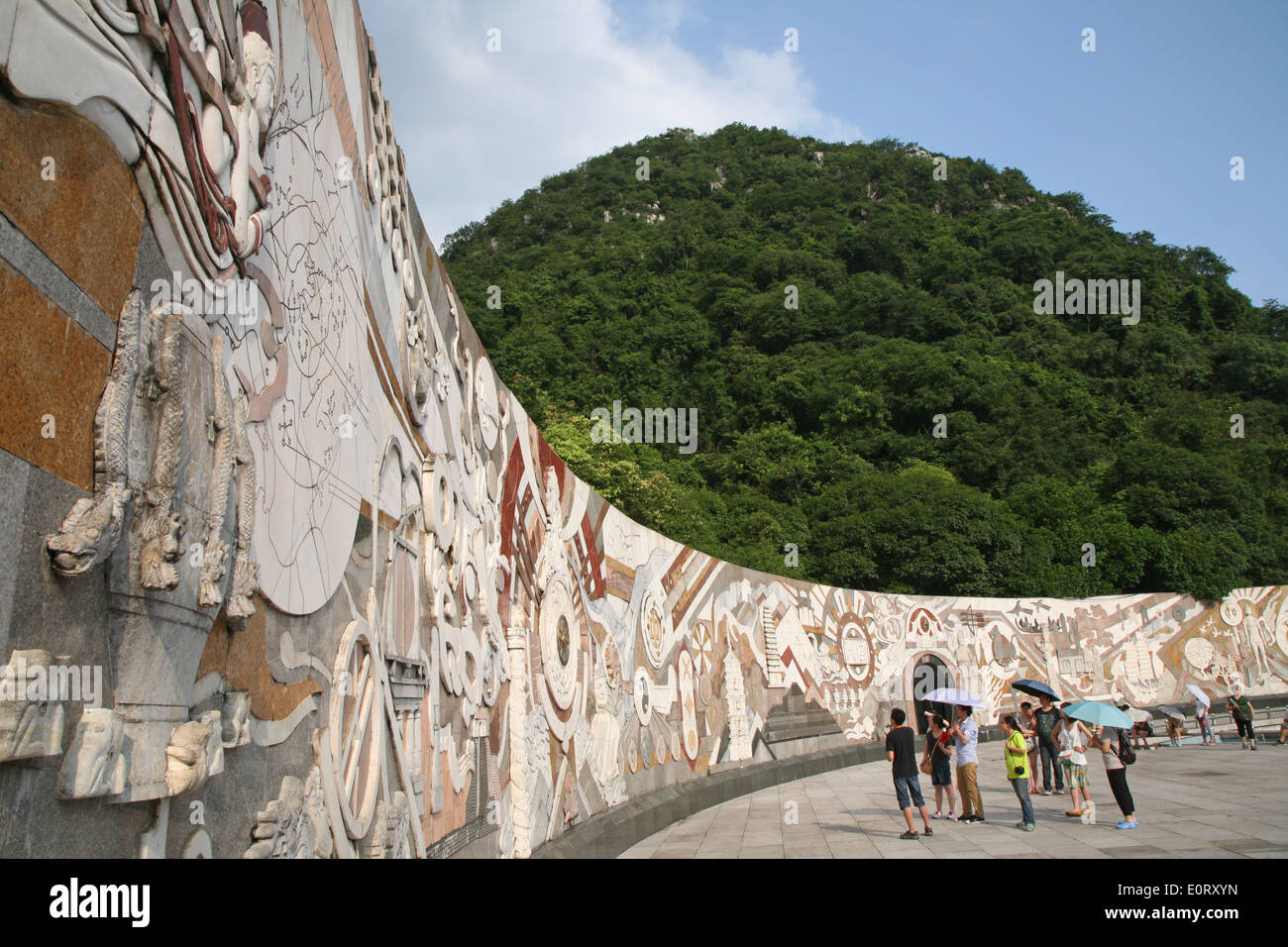 Large carved wall below the limestone hills in 'Seven Star Park' (Qixing Gongyuan) in Guilin city. Stock Photohttps://www.alamy.com/image-license-details/?v=1https://www.alamy.com/large-carved-wall-below-the-limestone-hills-in-seven-star-park-qixing-image69367529.html
Large carved wall below the limestone hills in 'Seven Star Park' (Qixing Gongyuan) in Guilin city. Stock Photohttps://www.alamy.com/image-license-details/?v=1https://www.alamy.com/large-carved-wall-below-the-limestone-hills-in-seven-star-park-qixing-image69367529.htmlRME0RXYN–Large carved wall below the limestone hills in 'Seven Star Park' (Qixing Gongyuan) in Guilin city.
 China: Waterfall, Qixing Gongyuan (Seven Star Park), Guilin. Qixing Gongyuan or Seven Star Park gained its name from the position of its seven hills, which suggest the pattern of the Plough (Big Dipper) constellation. The park has been a tourist attraction for more than 1,000 years. The name Guilin means ‘Cassia Woods’ and is named after the osmanthus (cassia) blossoms that bloom throughout the autumn period. Guilin is the scene of China’s most famous landscapes, inspiring thousands of paintings over many centuries. They are often called the ‘finest mountains and rivers under heaven’. Stock Photohttps://www.alamy.com/image-license-details/?v=1https://www.alamy.com/china-waterfall-qixing-gongyuan-seven-star-park-guilin-qixing-gongyuan-or-seven-star-park-gained-its-name-from-the-position-of-its-seven-hills-which-suggest-the-pattern-of-the-plough-big-dipper-constellation-the-park-has-been-a-tourist-attraction-for-more-than-1000-years-the-name-guilin-means-cassia-woods-and-is-named-after-the-osmanthus-cassia-blossoms-that-bloom-throughout-the-autumn-period-guilin-is-the-scene-of-chinas-most-famous-landscapes-inspiring-thousands-of-paintings-over-many-centuries-they-are-often-called-the-finest-mountains-and-rivers-under-heaven-image344243830.html
China: Waterfall, Qixing Gongyuan (Seven Star Park), Guilin. Qixing Gongyuan or Seven Star Park gained its name from the position of its seven hills, which suggest the pattern of the Plough (Big Dipper) constellation. The park has been a tourist attraction for more than 1,000 years. The name Guilin means ‘Cassia Woods’ and is named after the osmanthus (cassia) blossoms that bloom throughout the autumn period. Guilin is the scene of China’s most famous landscapes, inspiring thousands of paintings over many centuries. They are often called the ‘finest mountains and rivers under heaven’. Stock Photohttps://www.alamy.com/image-license-details/?v=1https://www.alamy.com/china-waterfall-qixing-gongyuan-seven-star-park-guilin-qixing-gongyuan-or-seven-star-park-gained-its-name-from-the-position-of-its-seven-hills-which-suggest-the-pattern-of-the-plough-big-dipper-constellation-the-park-has-been-a-tourist-attraction-for-more-than-1000-years-the-name-guilin-means-cassia-woods-and-is-named-after-the-osmanthus-cassia-blossoms-that-bloom-throughout-the-autumn-period-guilin-is-the-scene-of-chinas-most-famous-landscapes-inspiring-thousands-of-paintings-over-many-centuries-they-are-often-called-the-finest-mountains-and-rivers-under-heaven-image344243830.htmlRM2B01JEE–China: Waterfall, Qixing Gongyuan (Seven Star Park), Guilin. Qixing Gongyuan or Seven Star Park gained its name from the position of its seven hills, which suggest the pattern of the Plough (Big Dipper) constellation. The park has been a tourist attraction for more than 1,000 years. The name Guilin means ‘Cassia Woods’ and is named after the osmanthus (cassia) blossoms that bloom throughout the autumn period. Guilin is the scene of China’s most famous landscapes, inspiring thousands of paintings over many centuries. They are often called the ‘finest mountains and rivers under heaven’.
 Stone commemorating ancient intellectual cermony and recreation location in 'Seven Star Park' (Qixing Gongyuan) in Guilin city. Stock Photohttps://www.alamy.com/image-license-details/?v=1https://www.alamy.com/stone-commemorating-ancient-intellectual-cermony-and-recreation-location-image69368051.html
Stone commemorating ancient intellectual cermony and recreation location in 'Seven Star Park' (Qixing Gongyuan) in Guilin city. Stock Photohttps://www.alamy.com/image-license-details/?v=1https://www.alamy.com/stone-commemorating-ancient-intellectual-cermony-and-recreation-location-image69368051.htmlRME0RYJB–Stone commemorating ancient intellectual cermony and recreation location in 'Seven Star Park' (Qixing Gongyuan) in Guilin city.
 China: Waterfall, Qixing Gongyuan (Seven Star Park), Guilin. Qixing Gongyuan or Seven Star Park gained its name from the position of its seven hills, which suggest the pattern of the Plough (Big Dipper) constellation. The park has been a tourist attraction for more than 1,000 years. The name Guilin means ‘Cassia Woods’ and is named after the osmanthus (cassia) blossoms that bloom throughout the autumn period. Guilin is the scene of China’s most famous landscapes, inspiring thousands of paintings over many centuries. They are often called the ‘finest mountains and rivers under heaven’. Stock Photohttps://www.alamy.com/image-license-details/?v=1https://www.alamy.com/china-waterfall-qixing-gongyuan-seven-star-park-guilin-qixing-gongyuan-or-seven-star-park-gained-its-name-from-the-position-of-its-seven-hills-which-suggest-the-pattern-of-the-plough-big-dipper-constellation-the-park-has-been-a-tourist-attraction-for-more-than-1000-years-the-name-guilin-means-cassia-woods-and-is-named-after-the-osmanthus-cassia-blossoms-that-bloom-throughout-the-autumn-period-guilin-is-the-scene-of-chinas-most-famous-landscapes-inspiring-thousands-of-paintings-over-many-centuries-they-are-often-called-the-finest-mountains-and-rivers-under-heaven-image344243828.html
China: Waterfall, Qixing Gongyuan (Seven Star Park), Guilin. Qixing Gongyuan or Seven Star Park gained its name from the position of its seven hills, which suggest the pattern of the Plough (Big Dipper) constellation. The park has been a tourist attraction for more than 1,000 years. The name Guilin means ‘Cassia Woods’ and is named after the osmanthus (cassia) blossoms that bloom throughout the autumn period. Guilin is the scene of China’s most famous landscapes, inspiring thousands of paintings over many centuries. They are often called the ‘finest mountains and rivers under heaven’. Stock Photohttps://www.alamy.com/image-license-details/?v=1https://www.alamy.com/china-waterfall-qixing-gongyuan-seven-star-park-guilin-qixing-gongyuan-or-seven-star-park-gained-its-name-from-the-position-of-its-seven-hills-which-suggest-the-pattern-of-the-plough-big-dipper-constellation-the-park-has-been-a-tourist-attraction-for-more-than-1000-years-the-name-guilin-means-cassia-woods-and-is-named-after-the-osmanthus-cassia-blossoms-that-bloom-throughout-the-autumn-period-guilin-is-the-scene-of-chinas-most-famous-landscapes-inspiring-thousands-of-paintings-over-many-centuries-they-are-often-called-the-finest-mountains-and-rivers-under-heaven-image344243828.htmlRM2B01JEC–China: Waterfall, Qixing Gongyuan (Seven Star Park), Guilin. Qixing Gongyuan or Seven Star Park gained its name from the position of its seven hills, which suggest the pattern of the Plough (Big Dipper) constellation. The park has been a tourist attraction for more than 1,000 years. The name Guilin means ‘Cassia Woods’ and is named after the osmanthus (cassia) blossoms that bloom throughout the autumn period. Guilin is the scene of China’s most famous landscapes, inspiring thousands of paintings over many centuries. They are often called the ‘finest mountains and rivers under heaven’.
 Decorative statue of chinese philosopher in 'Seven Star Park' (Qixing Gongyuan), on the eastern side of the river in Guilin. Stock Photohttps://www.alamy.com/image-license-details/?v=1https://www.alamy.com/decorative-statue-of-chinese-philosopher-in-seven-star-park-qixing-image69367784.html
Decorative statue of chinese philosopher in 'Seven Star Park' (Qixing Gongyuan), on the eastern side of the river in Guilin. Stock Photohttps://www.alamy.com/image-license-details/?v=1https://www.alamy.com/decorative-statue-of-chinese-philosopher-in-seven-star-park-qixing-image69367784.htmlRME0RY8T–Decorative statue of chinese philosopher in 'Seven Star Park' (Qixing Gongyuan), on the eastern side of the river in Guilin.
 China: Communist monument, Qixing Gongyuan (Seven Star Park), Guilin, Guangxi Province. Qixing Gongyuan or Seven Star Park gained its name from the position of its seven hills, which suggest the pattern of the Plough (Big Dipper) constellation. The park has been a tourist attraction for more than 1,000 years. The name Guilin means ‘Cassia Woods’ and is named after the osmanthus (cassia) blossoms that bloom throughout the autumn period. Guilin is the scene of China’s most famous landscapes, inspiring thousands of paintings over many centuries. Stock Photohttps://www.alamy.com/image-license-details/?v=1https://www.alamy.com/china-communist-monument-qixing-gongyuan-seven-star-park-guilin-guangxi-province-qixing-gongyuan-or-seven-star-park-gained-its-name-from-the-position-of-its-seven-hills-which-suggest-the-pattern-of-the-plough-big-dipper-constellation-the-park-has-been-a-tourist-attraction-for-more-than-1000-years-the-name-guilin-means-cassia-woods-and-is-named-after-the-osmanthus-cassia-blossoms-that-bloom-throughout-the-autumn-period-guilin-is-the-scene-of-chinas-most-famous-landscapes-inspiring-thousands-of-paintings-over-many-centuries-image344243757.html
China: Communist monument, Qixing Gongyuan (Seven Star Park), Guilin, Guangxi Province. Qixing Gongyuan or Seven Star Park gained its name from the position of its seven hills, which suggest the pattern of the Plough (Big Dipper) constellation. The park has been a tourist attraction for more than 1,000 years. The name Guilin means ‘Cassia Woods’ and is named after the osmanthus (cassia) blossoms that bloom throughout the autumn period. Guilin is the scene of China’s most famous landscapes, inspiring thousands of paintings over many centuries. Stock Photohttps://www.alamy.com/image-license-details/?v=1https://www.alamy.com/china-communist-monument-qixing-gongyuan-seven-star-park-guilin-guangxi-province-qixing-gongyuan-or-seven-star-park-gained-its-name-from-the-position-of-its-seven-hills-which-suggest-the-pattern-of-the-plough-big-dipper-constellation-the-park-has-been-a-tourist-attraction-for-more-than-1000-years-the-name-guilin-means-cassia-woods-and-is-named-after-the-osmanthus-cassia-blossoms-that-bloom-throughout-the-autumn-period-guilin-is-the-scene-of-chinas-most-famous-landscapes-inspiring-thousands-of-paintings-over-many-centuries-image344243757.htmlRM2B01JBW–China: Communist monument, Qixing Gongyuan (Seven Star Park), Guilin, Guangxi Province. Qixing Gongyuan or Seven Star Park gained its name from the position of its seven hills, which suggest the pattern of the Plough (Big Dipper) constellation. The park has been a tourist attraction for more than 1,000 years. The name Guilin means ‘Cassia Woods’ and is named after the osmanthus (cassia) blossoms that bloom throughout the autumn period. Guilin is the scene of China’s most famous landscapes, inspiring thousands of paintings over many centuries.
 Decorative statue of chinese philosopher in 'Seven Star Park' (Qixing Gongyuan), on the eastern side of the river in Guilin. Stock Photohttps://www.alamy.com/image-license-details/?v=1https://www.alamy.com/decorative-statue-of-chinese-philosopher-in-seven-star-park-qixing-image69368018.html
Decorative statue of chinese philosopher in 'Seven Star Park' (Qixing Gongyuan), on the eastern side of the river in Guilin. Stock Photohttps://www.alamy.com/image-license-details/?v=1https://www.alamy.com/decorative-statue-of-chinese-philosopher-in-seven-star-park-qixing-image69368018.htmlRME0RYH6–Decorative statue of chinese philosopher in 'Seven Star Park' (Qixing Gongyuan), on the eastern side of the river in Guilin.
 China: Qixia Temple, Qixing Gongyuan (Seven Star Park), Guilin, Guangxi Province. Qixing Gongyuan or Seven Star Park gained its name from the position of its seven hills, which suggest the pattern of the Plough (Big Dipper) constellation. The park has been a tourist attraction for more than 1,000 years. The name Guilin means ‘Cassia Woods’ and is named after the osmanthus (cassia) blossoms that bloom throughout the autumn period. Guilin is the scene of China’s most famous landscapes, inspiring thousands of paintings over many centuries. Stock Photohttps://www.alamy.com/image-license-details/?v=1https://www.alamy.com/china-qixia-temple-qixing-gongyuan-seven-star-park-guilin-guangxi-province-qixing-gongyuan-or-seven-star-park-gained-its-name-from-the-position-of-its-seven-hills-which-suggest-the-pattern-of-the-plough-big-dipper-constellation-the-park-has-been-a-tourist-attraction-for-more-than-1000-years-the-name-guilin-means-cassia-woods-and-is-named-after-the-osmanthus-cassia-blossoms-that-bloom-throughout-the-autumn-period-guilin-is-the-scene-of-chinas-most-famous-landscapes-inspiring-thousands-of-paintings-over-many-centuries-image344243762.html
China: Qixia Temple, Qixing Gongyuan (Seven Star Park), Guilin, Guangxi Province. Qixing Gongyuan or Seven Star Park gained its name from the position of its seven hills, which suggest the pattern of the Plough (Big Dipper) constellation. The park has been a tourist attraction for more than 1,000 years. The name Guilin means ‘Cassia Woods’ and is named after the osmanthus (cassia) blossoms that bloom throughout the autumn period. Guilin is the scene of China’s most famous landscapes, inspiring thousands of paintings over many centuries. Stock Photohttps://www.alamy.com/image-license-details/?v=1https://www.alamy.com/china-qixia-temple-qixing-gongyuan-seven-star-park-guilin-guangxi-province-qixing-gongyuan-or-seven-star-park-gained-its-name-from-the-position-of-its-seven-hills-which-suggest-the-pattern-of-the-plough-big-dipper-constellation-the-park-has-been-a-tourist-attraction-for-more-than-1000-years-the-name-guilin-means-cassia-woods-and-is-named-after-the-osmanthus-cassia-blossoms-that-bloom-throughout-the-autumn-period-guilin-is-the-scene-of-chinas-most-famous-landscapes-inspiring-thousands-of-paintings-over-many-centuries-image344243762.htmlRM2B01JC2–China: Qixia Temple, Qixing Gongyuan (Seven Star Park), Guilin, Guangxi Province. Qixing Gongyuan or Seven Star Park gained its name from the position of its seven hills, which suggest the pattern of the Plough (Big Dipper) constellation. The park has been a tourist attraction for more than 1,000 years. The name Guilin means ‘Cassia Woods’ and is named after the osmanthus (cassia) blossoms that bloom throughout the autumn period. Guilin is the scene of China’s most famous landscapes, inspiring thousands of paintings over many centuries.
 Beautiful natural cave tunnel in 'Seven Star Park' (Qixing Gongyuan), on the eastern side of the river in Guilin, China. Stock Photohttps://www.alamy.com/image-license-details/?v=1https://www.alamy.com/beautiful-natural-cave-tunnel-in-seven-star-park-qixing-gongyuan-on-image69369559.html
Beautiful natural cave tunnel in 'Seven Star Park' (Qixing Gongyuan), on the eastern side of the river in Guilin, China. Stock Photohttps://www.alamy.com/image-license-details/?v=1https://www.alamy.com/beautiful-natural-cave-tunnel-in-seven-star-park-qixing-gongyuan-on-image69369559.htmlRME0T1G7–Beautiful natural cave tunnel in 'Seven Star Park' (Qixing Gongyuan), on the eastern side of the river in Guilin, China.
 China: Qixia Temple, Qixing Gongyuan (Seven Star Park), Guilin, Guangxi Province. Qixing Gongyuan or Seven Star Park gained its name from the position of its seven hills, which suggest the pattern of the Plough (Big Dipper) constellation. The park has been a tourist attraction for more than 1,000 years. The name Guilin means ‘Cassia Woods’ and is named after the osmanthus (cassia) blossoms that bloom throughout the autumn period. Guilin is the scene of China’s most famous landscapes, inspiring thousands of paintings over many centuries. Stock Photohttps://www.alamy.com/image-license-details/?v=1https://www.alamy.com/china-qixia-temple-qixing-gongyuan-seven-star-park-guilin-guangxi-province-qixing-gongyuan-or-seven-star-park-gained-its-name-from-the-position-of-its-seven-hills-which-suggest-the-pattern-of-the-plough-big-dipper-constellation-the-park-has-been-a-tourist-attraction-for-more-than-1000-years-the-name-guilin-means-cassia-woods-and-is-named-after-the-osmanthus-cassia-blossoms-that-bloom-throughout-the-autumn-period-guilin-is-the-scene-of-chinas-most-famous-landscapes-inspiring-thousands-of-paintings-over-many-centuries-image344243759.html
China: Qixia Temple, Qixing Gongyuan (Seven Star Park), Guilin, Guangxi Province. Qixing Gongyuan or Seven Star Park gained its name from the position of its seven hills, which suggest the pattern of the Plough (Big Dipper) constellation. The park has been a tourist attraction for more than 1,000 years. The name Guilin means ‘Cassia Woods’ and is named after the osmanthus (cassia) blossoms that bloom throughout the autumn period. Guilin is the scene of China’s most famous landscapes, inspiring thousands of paintings over many centuries. Stock Photohttps://www.alamy.com/image-license-details/?v=1https://www.alamy.com/china-qixia-temple-qixing-gongyuan-seven-star-park-guilin-guangxi-province-qixing-gongyuan-or-seven-star-park-gained-its-name-from-the-position-of-its-seven-hills-which-suggest-the-pattern-of-the-plough-big-dipper-constellation-the-park-has-been-a-tourist-attraction-for-more-than-1000-years-the-name-guilin-means-cassia-woods-and-is-named-after-the-osmanthus-cassia-blossoms-that-bloom-throughout-the-autumn-period-guilin-is-the-scene-of-chinas-most-famous-landscapes-inspiring-thousands-of-paintings-over-many-centuries-image344243759.htmlRM2B01JBY–China: Qixia Temple, Qixing Gongyuan (Seven Star Park), Guilin, Guangxi Province. Qixing Gongyuan or Seven Star Park gained its name from the position of its seven hills, which suggest the pattern of the Plough (Big Dipper) constellation. The park has been a tourist attraction for more than 1,000 years. The name Guilin means ‘Cassia Woods’ and is named after the osmanthus (cassia) blossoms that bloom throughout the autumn period. Guilin is the scene of China’s most famous landscapes, inspiring thousands of paintings over many centuries.
 Beautiful natural cave tunnel in 'Seven Star Park' (Qixing Gongyuan), on the eastern side of the river in Guilin, China. Stock Photohttps://www.alamy.com/image-license-details/?v=1https://www.alamy.com/beautiful-natural-cave-tunnel-in-seven-star-park-qixing-gongyuan-on-image69369569.html
Beautiful natural cave tunnel in 'Seven Star Park' (Qixing Gongyuan), on the eastern side of the river in Guilin, China. Stock Photohttps://www.alamy.com/image-license-details/?v=1https://www.alamy.com/beautiful-natural-cave-tunnel-in-seven-star-park-qixing-gongyuan-on-image69369569.htmlRME0T1GH–Beautiful natural cave tunnel in 'Seven Star Park' (Qixing Gongyuan), on the eastern side of the river in Guilin, China.
 China: Qixia Temple, Qixing Gongyuan (Seven Star Park), Guilin, Guangxi Province. Qixing Gongyuan or Seven Star Park gained its name from the position of its seven hills, which suggest the pattern of the Plough (Big Dipper) constellation. The park has been a tourist attraction for more than 1,000 years. The name Guilin means ‘Cassia Woods’ and is named after the osmanthus (cassia) blossoms that bloom throughout the autumn period. Guilin is the scene of China’s most famous landscapes, inspiring thousands of paintings over many centuries. Stock Photohttps://www.alamy.com/image-license-details/?v=1https://www.alamy.com/china-qixia-temple-qixing-gongyuan-seven-star-park-guilin-guangxi-province-qixing-gongyuan-or-seven-star-park-gained-its-name-from-the-position-of-its-seven-hills-which-suggest-the-pattern-of-the-plough-big-dipper-constellation-the-park-has-been-a-tourist-attraction-for-more-than-1000-years-the-name-guilin-means-cassia-woods-and-is-named-after-the-osmanthus-cassia-blossoms-that-bloom-throughout-the-autumn-period-guilin-is-the-scene-of-chinas-most-famous-landscapes-inspiring-thousands-of-paintings-over-many-centuries-image344243768.html
China: Qixia Temple, Qixing Gongyuan (Seven Star Park), Guilin, Guangxi Province. Qixing Gongyuan or Seven Star Park gained its name from the position of its seven hills, which suggest the pattern of the Plough (Big Dipper) constellation. The park has been a tourist attraction for more than 1,000 years. The name Guilin means ‘Cassia Woods’ and is named after the osmanthus (cassia) blossoms that bloom throughout the autumn period. Guilin is the scene of China’s most famous landscapes, inspiring thousands of paintings over many centuries. Stock Photohttps://www.alamy.com/image-license-details/?v=1https://www.alamy.com/china-qixia-temple-qixing-gongyuan-seven-star-park-guilin-guangxi-province-qixing-gongyuan-or-seven-star-park-gained-its-name-from-the-position-of-its-seven-hills-which-suggest-the-pattern-of-the-plough-big-dipper-constellation-the-park-has-been-a-tourist-attraction-for-more-than-1000-years-the-name-guilin-means-cassia-woods-and-is-named-after-the-osmanthus-cassia-blossoms-that-bloom-throughout-the-autumn-period-guilin-is-the-scene-of-chinas-most-famous-landscapes-inspiring-thousands-of-paintings-over-many-centuries-image344243768.htmlRM2B01JC8–China: Qixia Temple, Qixing Gongyuan (Seven Star Park), Guilin, Guangxi Province. Qixing Gongyuan or Seven Star Park gained its name from the position of its seven hills, which suggest the pattern of the Plough (Big Dipper) constellation. The park has been a tourist attraction for more than 1,000 years. The name Guilin means ‘Cassia Woods’ and is named after the osmanthus (cassia) blossoms that bloom throughout the autumn period. Guilin is the scene of China’s most famous landscapes, inspiring thousands of paintings over many centuries.
 Pathways winding around the limestone hills in 'Seven Star Park' (Qixing Gongyuan), on the eastern side of the river in Guilin. Stock Photohttps://www.alamy.com/image-license-details/?v=1https://www.alamy.com/pathways-winding-around-the-limestone-hills-in-seven-star-park-qixing-image69366828.html
Pathways winding around the limestone hills in 'Seven Star Park' (Qixing Gongyuan), on the eastern side of the river in Guilin. Stock Photohttps://www.alamy.com/image-license-details/?v=1https://www.alamy.com/pathways-winding-around-the-limestone-hills-in-seven-star-park-qixing-image69366828.htmlRME0RX2M–Pathways winding around the limestone hills in 'Seven Star Park' (Qixing Gongyuan), on the eastern side of the river in Guilin.
 China: Qixia Temple, Qixing Gongyuan (Seven Star Park), Guilin, Guangxi Province. Qixing Gongyuan or Seven Star Park gained its name from the position of its seven hills, which suggest the pattern of the Plough (Big Dipper) constellation. The park has been a tourist attraction for more than 1,000 years. The name Guilin means ‘Cassia Woods’ and is named after the osmanthus (cassia) blossoms that bloom throughout the autumn period. Guilin is the scene of China’s most famous landscapes, inspiring thousands of paintings over many centuries. Stock Photohttps://www.alamy.com/image-license-details/?v=1https://www.alamy.com/china-qixia-temple-qixing-gongyuan-seven-star-park-guilin-guangxi-province-qixing-gongyuan-or-seven-star-park-gained-its-name-from-the-position-of-its-seven-hills-which-suggest-the-pattern-of-the-plough-big-dipper-constellation-the-park-has-been-a-tourist-attraction-for-more-than-1000-years-the-name-guilin-means-cassia-woods-and-is-named-after-the-osmanthus-cassia-blossoms-that-bloom-throughout-the-autumn-period-guilin-is-the-scene-of-chinas-most-famous-landscapes-inspiring-thousands-of-paintings-over-many-centuries-image344243763.html
China: Qixia Temple, Qixing Gongyuan (Seven Star Park), Guilin, Guangxi Province. Qixing Gongyuan or Seven Star Park gained its name from the position of its seven hills, which suggest the pattern of the Plough (Big Dipper) constellation. The park has been a tourist attraction for more than 1,000 years. The name Guilin means ‘Cassia Woods’ and is named after the osmanthus (cassia) blossoms that bloom throughout the autumn period. Guilin is the scene of China’s most famous landscapes, inspiring thousands of paintings over many centuries. Stock Photohttps://www.alamy.com/image-license-details/?v=1https://www.alamy.com/china-qixia-temple-qixing-gongyuan-seven-star-park-guilin-guangxi-province-qixing-gongyuan-or-seven-star-park-gained-its-name-from-the-position-of-its-seven-hills-which-suggest-the-pattern-of-the-plough-big-dipper-constellation-the-park-has-been-a-tourist-attraction-for-more-than-1000-years-the-name-guilin-means-cassia-woods-and-is-named-after-the-osmanthus-cassia-blossoms-that-bloom-throughout-the-autumn-period-guilin-is-the-scene-of-chinas-most-famous-landscapes-inspiring-thousands-of-paintings-over-many-centuries-image344243763.htmlRM2B01JC3–China: Qixia Temple, Qixing Gongyuan (Seven Star Park), Guilin, Guangxi Province. Qixing Gongyuan or Seven Star Park gained its name from the position of its seven hills, which suggest the pattern of the Plough (Big Dipper) constellation. The park has been a tourist attraction for more than 1,000 years. The name Guilin means ‘Cassia Woods’ and is named after the osmanthus (cassia) blossoms that bloom throughout the autumn period. Guilin is the scene of China’s most famous landscapes, inspiring thousands of paintings over many centuries.
 Pathways winding around the limestone hills in 'Seven Star Park' (Qixing Gongyuan), on the eastern side of the river in Guilin. Stock Photohttps://www.alamy.com/image-license-details/?v=1https://www.alamy.com/pathways-winding-around-the-limestone-hills-in-seven-star-park-qixing-image69366592.html
Pathways winding around the limestone hills in 'Seven Star Park' (Qixing Gongyuan), on the eastern side of the river in Guilin. Stock Photohttps://www.alamy.com/image-license-details/?v=1https://www.alamy.com/pathways-winding-around-the-limestone-hills-in-seven-star-park-qixing-image69366592.htmlRME0RWP8–Pathways winding around the limestone hills in 'Seven Star Park' (Qixing Gongyuan), on the eastern side of the river in Guilin.
 China: Qixia Temple, Qixing Gongyuan (Seven Star Park), Guilin, Guangxi Province. Qixing Gongyuan or Seven Star Park gained its name from the position of its seven hills, which suggest the pattern of the Plough (Big Dipper) constellation. The park has been a tourist attraction for more than 1,000 years. The name Guilin means ‘Cassia Woods’ and is named after the osmanthus (cassia) blossoms that bloom throughout the autumn period. Guilin is the scene of China’s most famous landscapes, inspiring thousands of paintings over many centuries. Stock Photohttps://www.alamy.com/image-license-details/?v=1https://www.alamy.com/china-qixia-temple-qixing-gongyuan-seven-star-park-guilin-guangxi-province-qixing-gongyuan-or-seven-star-park-gained-its-name-from-the-position-of-its-seven-hills-which-suggest-the-pattern-of-the-plough-big-dipper-constellation-the-park-has-been-a-tourist-attraction-for-more-than-1000-years-the-name-guilin-means-cassia-woods-and-is-named-after-the-osmanthus-cassia-blossoms-that-bloom-throughout-the-autumn-period-guilin-is-the-scene-of-chinas-most-famous-landscapes-inspiring-thousands-of-paintings-over-many-centuries-image344243758.html
China: Qixia Temple, Qixing Gongyuan (Seven Star Park), Guilin, Guangxi Province. Qixing Gongyuan or Seven Star Park gained its name from the position of its seven hills, which suggest the pattern of the Plough (Big Dipper) constellation. The park has been a tourist attraction for more than 1,000 years. The name Guilin means ‘Cassia Woods’ and is named after the osmanthus (cassia) blossoms that bloom throughout the autumn period. Guilin is the scene of China’s most famous landscapes, inspiring thousands of paintings over many centuries. Stock Photohttps://www.alamy.com/image-license-details/?v=1https://www.alamy.com/china-qixia-temple-qixing-gongyuan-seven-star-park-guilin-guangxi-province-qixing-gongyuan-or-seven-star-park-gained-its-name-from-the-position-of-its-seven-hills-which-suggest-the-pattern-of-the-plough-big-dipper-constellation-the-park-has-been-a-tourist-attraction-for-more-than-1000-years-the-name-guilin-means-cassia-woods-and-is-named-after-the-osmanthus-cassia-blossoms-that-bloom-throughout-the-autumn-period-guilin-is-the-scene-of-chinas-most-famous-landscapes-inspiring-thousands-of-paintings-over-many-centuries-image344243758.htmlRM2B01JBX–China: Qixia Temple, Qixing Gongyuan (Seven Star Park), Guilin, Guangxi Province. Qixing Gongyuan or Seven Star Park gained its name from the position of its seven hills, which suggest the pattern of the Plough (Big Dipper) constellation. The park has been a tourist attraction for more than 1,000 years. The name Guilin means ‘Cassia Woods’ and is named after the osmanthus (cassia) blossoms that bloom throughout the autumn period. Guilin is the scene of China’s most famous landscapes, inspiring thousands of paintings over many centuries.
 Pathways winding around the limestone hills in 'Seven Star Park' (Qixing Gongyuan), on the eastern side of the river in Guilin. Stock Photohttps://www.alamy.com/image-license-details/?v=1https://www.alamy.com/pathways-winding-around-the-limestone-hills-in-seven-star-park-qixing-image69367398.html
Pathways winding around the limestone hills in 'Seven Star Park' (Qixing Gongyuan), on the eastern side of the river in Guilin. Stock Photohttps://www.alamy.com/image-license-details/?v=1https://www.alamy.com/pathways-winding-around-the-limestone-hills-in-seven-star-park-qixing-image69367398.htmlRME0RXR2–Pathways winding around the limestone hills in 'Seven Star Park' (Qixing Gongyuan), on the eastern side of the river in Guilin.
 China: Qixia Temple, Qixing Gongyuan (Seven Star Park), Guilin, Guangxi Province. Qixing Gongyuan or Seven Star Park gained its name from the position of its seven hills, which suggest the pattern of the Plough (Big Dipper) constellation. The park has been a tourist attraction for more than 1,000 years. The name Guilin means ‘Cassia Woods’ and is named after the osmanthus (cassia) blossoms that bloom throughout the autumn period. Guilin is the scene of China’s most famous landscapes, inspiring thousands of paintings over many centuries. Stock Photohttps://www.alamy.com/image-license-details/?v=1https://www.alamy.com/china-qixia-temple-qixing-gongyuan-seven-star-park-guilin-guangxi-province-qixing-gongyuan-or-seven-star-park-gained-its-name-from-the-position-of-its-seven-hills-which-suggest-the-pattern-of-the-plough-big-dipper-constellation-the-park-has-been-a-tourist-attraction-for-more-than-1000-years-the-name-guilin-means-cassia-woods-and-is-named-after-the-osmanthus-cassia-blossoms-that-bloom-throughout-the-autumn-period-guilin-is-the-scene-of-chinas-most-famous-landscapes-inspiring-thousands-of-paintings-over-many-centuries-image344243764.html
China: Qixia Temple, Qixing Gongyuan (Seven Star Park), Guilin, Guangxi Province. Qixing Gongyuan or Seven Star Park gained its name from the position of its seven hills, which suggest the pattern of the Plough (Big Dipper) constellation. The park has been a tourist attraction for more than 1,000 years. The name Guilin means ‘Cassia Woods’ and is named after the osmanthus (cassia) blossoms that bloom throughout the autumn period. Guilin is the scene of China’s most famous landscapes, inspiring thousands of paintings over many centuries. Stock Photohttps://www.alamy.com/image-license-details/?v=1https://www.alamy.com/china-qixia-temple-qixing-gongyuan-seven-star-park-guilin-guangxi-province-qixing-gongyuan-or-seven-star-park-gained-its-name-from-the-position-of-its-seven-hills-which-suggest-the-pattern-of-the-plough-big-dipper-constellation-the-park-has-been-a-tourist-attraction-for-more-than-1000-years-the-name-guilin-means-cassia-woods-and-is-named-after-the-osmanthus-cassia-blossoms-that-bloom-throughout-the-autumn-period-guilin-is-the-scene-of-chinas-most-famous-landscapes-inspiring-thousands-of-paintings-over-many-centuries-image344243764.htmlRM2B01JC4–China: Qixia Temple, Qixing Gongyuan (Seven Star Park), Guilin, Guangxi Province. Qixing Gongyuan or Seven Star Park gained its name from the position of its seven hills, which suggest the pattern of the Plough (Big Dipper) constellation. The park has been a tourist attraction for more than 1,000 years. The name Guilin means ‘Cassia Woods’ and is named after the osmanthus (cassia) blossoms that bloom throughout the autumn period. Guilin is the scene of China’s most famous landscapes, inspiring thousands of paintings over many centuries.
 Pathways winding around the limestone hills in 'Seven Star Park' (Qixing Gongyuan), on the eastern side of the river in Guilin. Stock Photohttps://www.alamy.com/image-license-details/?v=1https://www.alamy.com/pathways-winding-around-the-limestone-hills-in-seven-star-park-qixing-image69366817.html
Pathways winding around the limestone hills in 'Seven Star Park' (Qixing Gongyuan), on the eastern side of the river in Guilin. Stock Photohttps://www.alamy.com/image-license-details/?v=1https://www.alamy.com/pathways-winding-around-the-limestone-hills-in-seven-star-park-qixing-image69366817.htmlRME0RX29–Pathways winding around the limestone hills in 'Seven Star Park' (Qixing Gongyuan), on the eastern side of the river in Guilin.
 China: Buddha, Qixia Temple, Qixing Gongyuan (Seven Star Park). Qixing Gongyuan or Seven Star Park gained its name from the position of its seven hills, which suggest the pattern of the Plough (Big Dipper) constellation. The park has been a tourist attraction for more than 1,000 years. The name Guilin means ‘Cassia Woods’ and is named after the osmanthus (cassia) blossoms that bloom throughout the autumn period. Guilin is the scene of China’s most famous landscapes, inspiring thousands of paintings over many centuries. They are often called the ‘finest mountains and rivers under heaven’. Stock Photohttps://www.alamy.com/image-license-details/?v=1https://www.alamy.com/china-buddha-qixia-temple-qixing-gongyuan-seven-star-park-qixing-gongyuan-or-seven-star-park-gained-its-name-from-the-position-of-its-seven-hills-which-suggest-the-pattern-of-the-plough-big-dipper-constellation-the-park-has-been-a-tourist-attraction-for-more-than-1000-years-the-name-guilin-means-cassia-woods-and-is-named-after-the-osmanthus-cassia-blossoms-that-bloom-throughout-the-autumn-period-guilin-is-the-scene-of-chinas-most-famous-landscapes-inspiring-thousands-of-paintings-over-many-centuries-they-are-often-called-the-finest-mountains-and-rivers-under-heaven-image344243767.html
China: Buddha, Qixia Temple, Qixing Gongyuan (Seven Star Park). Qixing Gongyuan or Seven Star Park gained its name from the position of its seven hills, which suggest the pattern of the Plough (Big Dipper) constellation. The park has been a tourist attraction for more than 1,000 years. The name Guilin means ‘Cassia Woods’ and is named after the osmanthus (cassia) blossoms that bloom throughout the autumn period. Guilin is the scene of China’s most famous landscapes, inspiring thousands of paintings over many centuries. They are often called the ‘finest mountains and rivers under heaven’. Stock Photohttps://www.alamy.com/image-license-details/?v=1https://www.alamy.com/china-buddha-qixia-temple-qixing-gongyuan-seven-star-park-qixing-gongyuan-or-seven-star-park-gained-its-name-from-the-position-of-its-seven-hills-which-suggest-the-pattern-of-the-plough-big-dipper-constellation-the-park-has-been-a-tourist-attraction-for-more-than-1000-years-the-name-guilin-means-cassia-woods-and-is-named-after-the-osmanthus-cassia-blossoms-that-bloom-throughout-the-autumn-period-guilin-is-the-scene-of-chinas-most-famous-landscapes-inspiring-thousands-of-paintings-over-many-centuries-they-are-often-called-the-finest-mountains-and-rivers-under-heaven-image344243767.htmlRM2B01JC7–China: Buddha, Qixia Temple, Qixing Gongyuan (Seven Star Park). Qixing Gongyuan or Seven Star Park gained its name from the position of its seven hills, which suggest the pattern of the Plough (Big Dipper) constellation. The park has been a tourist attraction for more than 1,000 years. The name Guilin means ‘Cassia Woods’ and is named after the osmanthus (cassia) blossoms that bloom throughout the autumn period. Guilin is the scene of China’s most famous landscapes, inspiring thousands of paintings over many centuries. They are often called the ‘finest mountains and rivers under heaven’.
 Buddhist shrine in a cavern in 'Seven Star Park' (Qixing Gongyuan), on the eastern side of the river in Guilin. Stock Photohttps://www.alamy.com/image-license-details/?v=1https://www.alamy.com/buddhist-shrine-in-a-cavern-in-seven-star-park-qixing-gongyuan-on-image69366844.html
Buddhist shrine in a cavern in 'Seven Star Park' (Qixing Gongyuan), on the eastern side of the river in Guilin. Stock Photohttps://www.alamy.com/image-license-details/?v=1https://www.alamy.com/buddhist-shrine-in-a-cavern-in-seven-star-park-qixing-gongyuan-on-image69366844.htmlRME0RX38–Buddhist shrine in a cavern in 'Seven Star Park' (Qixing Gongyuan), on the eastern side of the river in Guilin.
 China: Buddha, Qixia Temple, Qixing Gongyuan (Seven Star Park). Qixing Gongyuan or Seven Star Park gained its name from the position of its seven hills, which suggest the pattern of the Plough (Big Dipper) constellation. The park has been a tourist attraction for more than 1,000 years. The name Guilin means ‘Cassia Woods’ and is named after the osmanthus (cassia) blossoms that bloom throughout the autumn period. Guilin is the scene of China’s most famous landscapes, inspiring thousands of paintings over many centuries. They are often called the ‘finest mountains and rivers under heaven’. Stock Photohttps://www.alamy.com/image-license-details/?v=1https://www.alamy.com/china-buddha-qixia-temple-qixing-gongyuan-seven-star-park-qixing-gongyuan-or-seven-star-park-gained-its-name-from-the-position-of-its-seven-hills-which-suggest-the-pattern-of-the-plough-big-dipper-constellation-the-park-has-been-a-tourist-attraction-for-more-than-1000-years-the-name-guilin-means-cassia-woods-and-is-named-after-the-osmanthus-cassia-blossoms-that-bloom-throughout-the-autumn-period-guilin-is-the-scene-of-chinas-most-famous-landscapes-inspiring-thousands-of-paintings-over-many-centuries-they-are-often-called-the-finest-mountains-and-rivers-under-heaven-image344243765.html
China: Buddha, Qixia Temple, Qixing Gongyuan (Seven Star Park). Qixing Gongyuan or Seven Star Park gained its name from the position of its seven hills, which suggest the pattern of the Plough (Big Dipper) constellation. The park has been a tourist attraction for more than 1,000 years. The name Guilin means ‘Cassia Woods’ and is named after the osmanthus (cassia) blossoms that bloom throughout the autumn period. Guilin is the scene of China’s most famous landscapes, inspiring thousands of paintings over many centuries. They are often called the ‘finest mountains and rivers under heaven’. Stock Photohttps://www.alamy.com/image-license-details/?v=1https://www.alamy.com/china-buddha-qixia-temple-qixing-gongyuan-seven-star-park-qixing-gongyuan-or-seven-star-park-gained-its-name-from-the-position-of-its-seven-hills-which-suggest-the-pattern-of-the-plough-big-dipper-constellation-the-park-has-been-a-tourist-attraction-for-more-than-1000-years-the-name-guilin-means-cassia-woods-and-is-named-after-the-osmanthus-cassia-blossoms-that-bloom-throughout-the-autumn-period-guilin-is-the-scene-of-chinas-most-famous-landscapes-inspiring-thousands-of-paintings-over-many-centuries-they-are-often-called-the-finest-mountains-and-rivers-under-heaven-image344243765.htmlRM2B01JC5–China: Buddha, Qixia Temple, Qixing Gongyuan (Seven Star Park). Qixing Gongyuan or Seven Star Park gained its name from the position of its seven hills, which suggest the pattern of the Plough (Big Dipper) constellation. The park has been a tourist attraction for more than 1,000 years. The name Guilin means ‘Cassia Woods’ and is named after the osmanthus (cassia) blossoms that bloom throughout the autumn period. Guilin is the scene of China’s most famous landscapes, inspiring thousands of paintings over many centuries. They are often called the ‘finest mountains and rivers under heaven’.
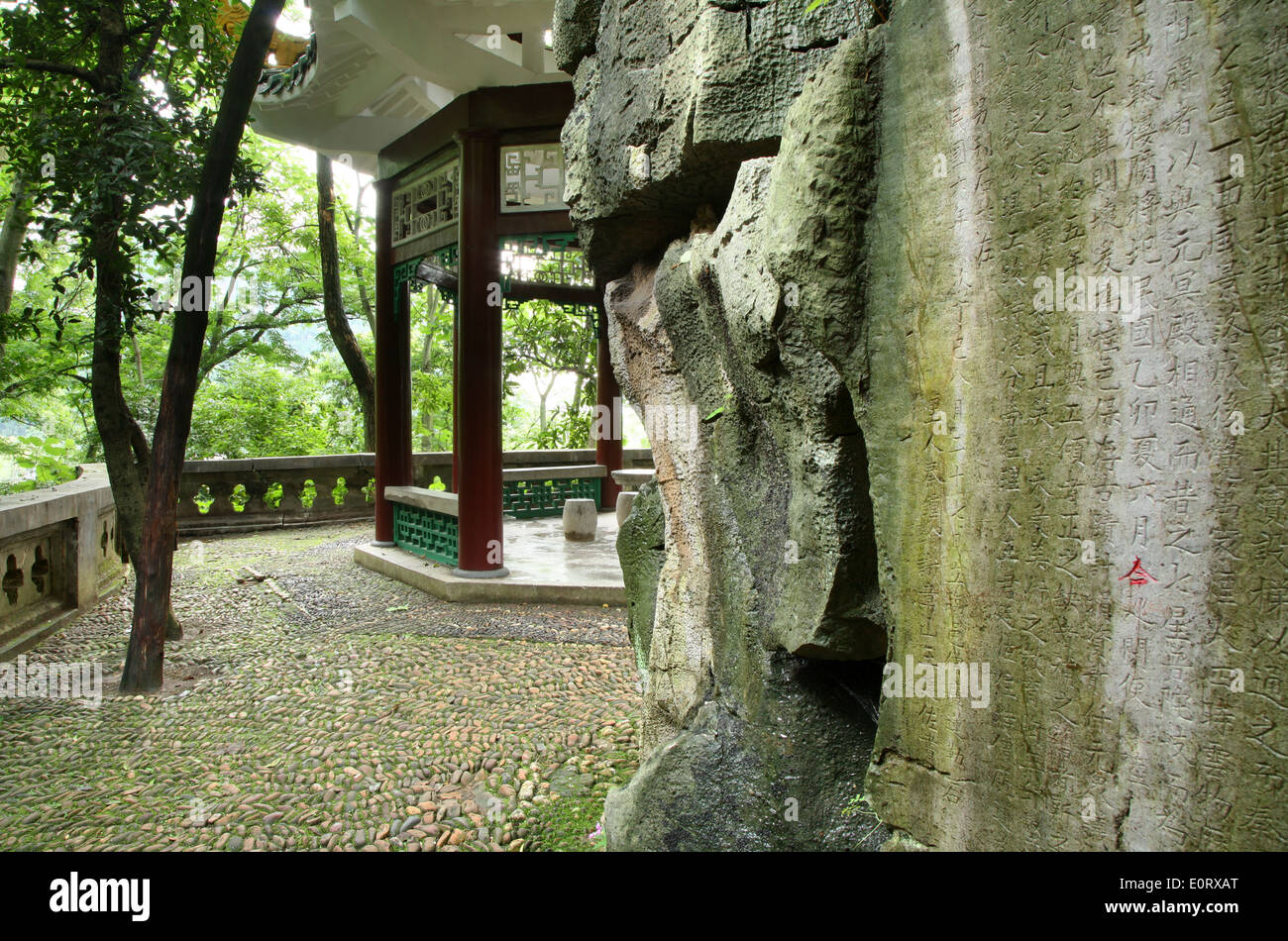 Pathways winding around the limestone hills in 'Seven Star Park' (Qixing Gongyuan), on the eastern side of the river in Guilin. Stock Photohttps://www.alamy.com/image-license-details/?v=1https://www.alamy.com/pathways-winding-around-the-limestone-hills-in-seven-star-park-qixing-image69367056.html
Pathways winding around the limestone hills in 'Seven Star Park' (Qixing Gongyuan), on the eastern side of the river in Guilin. Stock Photohttps://www.alamy.com/image-license-details/?v=1https://www.alamy.com/pathways-winding-around-the-limestone-hills-in-seven-star-park-qixing-image69367056.htmlRME0RXAT–Pathways winding around the limestone hills in 'Seven Star Park' (Qixing Gongyuan), on the eastern side of the river in Guilin.
 China: Buddha, Qixia Temple, Qixing Gongyuan (Seven Star Park). Qixing Gongyuan or Seven Star Park gained its name from the position of its seven hills, which suggest the pattern of the Plough (Big Dipper) constellation. The park has been a tourist attraction for more than 1,000 years. The name Guilin means ‘Cassia Woods’ and is named after the osmanthus (cassia) blossoms that bloom throughout the autumn period. Guilin is the scene of China’s most famous landscapes, inspiring thousands of paintings over many centuries. They are often called the ‘finest mountains and rivers under heaven’. Stock Photohttps://www.alamy.com/image-license-details/?v=1https://www.alamy.com/china-buddha-qixia-temple-qixing-gongyuan-seven-star-park-qixing-gongyuan-or-seven-star-park-gained-its-name-from-the-position-of-its-seven-hills-which-suggest-the-pattern-of-the-plough-big-dipper-constellation-the-park-has-been-a-tourist-attraction-for-more-than-1000-years-the-name-guilin-means-cassia-woods-and-is-named-after-the-osmanthus-cassia-blossoms-that-bloom-throughout-the-autumn-period-guilin-is-the-scene-of-chinas-most-famous-landscapes-inspiring-thousands-of-paintings-over-many-centuries-they-are-often-called-the-finest-mountains-and-rivers-under-heaven-image344243766.html
China: Buddha, Qixia Temple, Qixing Gongyuan (Seven Star Park). Qixing Gongyuan or Seven Star Park gained its name from the position of its seven hills, which suggest the pattern of the Plough (Big Dipper) constellation. The park has been a tourist attraction for more than 1,000 years. The name Guilin means ‘Cassia Woods’ and is named after the osmanthus (cassia) blossoms that bloom throughout the autumn period. Guilin is the scene of China’s most famous landscapes, inspiring thousands of paintings over many centuries. They are often called the ‘finest mountains and rivers under heaven’. Stock Photohttps://www.alamy.com/image-license-details/?v=1https://www.alamy.com/china-buddha-qixia-temple-qixing-gongyuan-seven-star-park-qixing-gongyuan-or-seven-star-park-gained-its-name-from-the-position-of-its-seven-hills-which-suggest-the-pattern-of-the-plough-big-dipper-constellation-the-park-has-been-a-tourist-attraction-for-more-than-1000-years-the-name-guilin-means-cassia-woods-and-is-named-after-the-osmanthus-cassia-blossoms-that-bloom-throughout-the-autumn-period-guilin-is-the-scene-of-chinas-most-famous-landscapes-inspiring-thousands-of-paintings-over-many-centuries-they-are-often-called-the-finest-mountains-and-rivers-under-heaven-image344243766.htmlRM2B01JC6–China: Buddha, Qixia Temple, Qixing Gongyuan (Seven Star Park). Qixing Gongyuan or Seven Star Park gained its name from the position of its seven hills, which suggest the pattern of the Plough (Big Dipper) constellation. The park has been a tourist attraction for more than 1,000 years. The name Guilin means ‘Cassia Woods’ and is named after the osmanthus (cassia) blossoms that bloom throughout the autumn period. Guilin is the scene of China’s most famous landscapes, inspiring thousands of paintings over many centuries. They are often called the ‘finest mountains and rivers under heaven’.
 Buddha statue in a cavern in 'Seven Star Park' (Qixing Gongyuan), on the eastern side of the river in Guilin. Stock Photohttps://www.alamy.com/image-license-details/?v=1https://www.alamy.com/buddha-statue-in-a-cavern-in-seven-star-park-qixing-gongyuan-on-the-image69368552.html
Buddha statue in a cavern in 'Seven Star Park' (Qixing Gongyuan), on the eastern side of the river in Guilin. Stock Photohttps://www.alamy.com/image-license-details/?v=1https://www.alamy.com/buddha-statue-in-a-cavern-in-seven-star-park-qixing-gongyuan-on-the-image69368552.htmlRME0T088–Buddha statue in a cavern in 'Seven Star Park' (Qixing Gongyuan), on the eastern side of the river in Guilin.
 China: Voltron knockoff statue, Qixing Gongyuan (Seven Star Park). Qixing Gongyuan or Seven Star Park gained its name from the position of its seven hills, which suggest the pattern of the Plough (Big Dipper) constellation. The park has been a tourist attraction for more than 1,000 years. The name Guilin means ‘Cassia Woods’ and is named after the osmanthus (cassia) blossoms that bloom throughout the autumn period. Guilin is the scene of China’s most famous landscapes, inspiring thousands of paintings over many centuries. They are often called the ‘finest mountains and rivers under heaven’. Stock Photohttps://www.alamy.com/image-license-details/?v=1https://www.alamy.com/china-voltron-knockoff-statue-qixing-gongyuan-seven-star-park-qixing-gongyuan-or-seven-star-park-gained-its-name-from-the-position-of-its-seven-hills-which-suggest-the-pattern-of-the-plough-big-dipper-constellation-the-park-has-been-a-tourist-attraction-for-more-than-1000-years-the-name-guilin-means-cassia-woods-and-is-named-after-the-osmanthus-cassia-blossoms-that-bloom-throughout-the-autumn-period-guilin-is-the-scene-of-chinas-most-famous-landscapes-inspiring-thousands-of-paintings-over-many-centuries-they-are-often-called-the-finest-mountains-and-rivers-under-heaven-image344243770.html
China: Voltron knockoff statue, Qixing Gongyuan (Seven Star Park). Qixing Gongyuan or Seven Star Park gained its name from the position of its seven hills, which suggest the pattern of the Plough (Big Dipper) constellation. The park has been a tourist attraction for more than 1,000 years. The name Guilin means ‘Cassia Woods’ and is named after the osmanthus (cassia) blossoms that bloom throughout the autumn period. Guilin is the scene of China’s most famous landscapes, inspiring thousands of paintings over many centuries. They are often called the ‘finest mountains and rivers under heaven’. Stock Photohttps://www.alamy.com/image-license-details/?v=1https://www.alamy.com/china-voltron-knockoff-statue-qixing-gongyuan-seven-star-park-qixing-gongyuan-or-seven-star-park-gained-its-name-from-the-position-of-its-seven-hills-which-suggest-the-pattern-of-the-plough-big-dipper-constellation-the-park-has-been-a-tourist-attraction-for-more-than-1000-years-the-name-guilin-means-cassia-woods-and-is-named-after-the-osmanthus-cassia-blossoms-that-bloom-throughout-the-autumn-period-guilin-is-the-scene-of-chinas-most-famous-landscapes-inspiring-thousands-of-paintings-over-many-centuries-they-are-often-called-the-finest-mountains-and-rivers-under-heaven-image344243770.htmlRM2B01JCA–China: Voltron knockoff statue, Qixing Gongyuan (Seven Star Park). Qixing Gongyuan or Seven Star Park gained its name from the position of its seven hills, which suggest the pattern of the Plough (Big Dipper) constellation. The park has been a tourist attraction for more than 1,000 years. The name Guilin means ‘Cassia Woods’ and is named after the osmanthus (cassia) blossoms that bloom throughout the autumn period. Guilin is the scene of China’s most famous landscapes, inspiring thousands of paintings over many centuries. They are often called the ‘finest mountains and rivers under heaven’.
 Buddha statue in a cavern in 'Seven Star Park' (Qixing Gongyuan), on the eastern side of the river in Guilin. Stock Photohttps://www.alamy.com/image-license-details/?v=1https://www.alamy.com/buddha-statue-in-a-cavern-in-seven-star-park-qixing-gongyuan-on-the-image69368436.html
Buddha statue in a cavern in 'Seven Star Park' (Qixing Gongyuan), on the eastern side of the river in Guilin. Stock Photohttps://www.alamy.com/image-license-details/?v=1https://www.alamy.com/buddha-statue-in-a-cavern-in-seven-star-park-qixing-gongyuan-on-the-image69368436.htmlRME0T044–Buddha statue in a cavern in 'Seven Star Park' (Qixing Gongyuan), on the eastern side of the river in Guilin.
 Buddha statue in a cavern in 'Seven Star Park' (Qixing Gongyuan), on the eastern side of the river in Guilin. Stock Photohttps://www.alamy.com/image-license-details/?v=1https://www.alamy.com/buddha-statue-in-a-cavern-in-seven-star-park-qixing-gongyuan-on-the-image69368416.html
Buddha statue in a cavern in 'Seven Star Park' (Qixing Gongyuan), on the eastern side of the river in Guilin. Stock Photohttps://www.alamy.com/image-license-details/?v=1https://www.alamy.com/buddha-statue-in-a-cavern-in-seven-star-park-qixing-gongyuan-on-the-image69368416.htmlRME0T03C–Buddha statue in a cavern in 'Seven Star Park' (Qixing Gongyuan), on the eastern side of the river in Guilin.
 Buddhist shrine with statues in a cavern in 'Seven Star Park' (Qixing Gongyuan), on the eastern side of the river in Guilin. Stock Photohttps://www.alamy.com/image-license-details/?v=1https://www.alamy.com/buddhist-shrine-with-statues-in-a-cavern-in-seven-star-park-qixing-image69369542.html
Buddhist shrine with statues in a cavern in 'Seven Star Park' (Qixing Gongyuan), on the eastern side of the river in Guilin. Stock Photohttps://www.alamy.com/image-license-details/?v=1https://www.alamy.com/buddhist-shrine-with-statues-in-a-cavern-in-seven-star-park-qixing-image69369542.htmlRME0T1FJ–Buddhist shrine with statues in a cavern in 'Seven Star Park' (Qixing Gongyuan), on the eastern side of the river in Guilin.
 Buddhist shrine with statues in a cavern in 'Seven Star Park' (Qixing Gongyuan), on the eastern side of the river in Guilin. Stock Photohttps://www.alamy.com/image-license-details/?v=1https://www.alamy.com/buddhist-shrine-with-statues-in-a-cavern-in-seven-star-park-qixing-image69368402.html
Buddhist shrine with statues in a cavern in 'Seven Star Park' (Qixing Gongyuan), on the eastern side of the river in Guilin. Stock Photohttps://www.alamy.com/image-license-details/?v=1https://www.alamy.com/buddhist-shrine-with-statues-in-a-cavern-in-seven-star-park-qixing-image69368402.htmlRME0T02X–Buddhist shrine with statues in a cavern in 'Seven Star Park' (Qixing Gongyuan), on the eastern side of the river in Guilin.
 Buddhist shrine with statues in a cavern in 'Seven Star Park' (Qixing Gongyuan), on the eastern side of the river in Guilin. Stock Photohttps://www.alamy.com/image-license-details/?v=1https://www.alamy.com/buddhist-shrine-with-statues-in-a-cavern-in-seven-star-park-qixing-image69368174.html
Buddhist shrine with statues in a cavern in 'Seven Star Park' (Qixing Gongyuan), on the eastern side of the river in Guilin. Stock Photohttps://www.alamy.com/image-license-details/?v=1https://www.alamy.com/buddhist-shrine-with-statues-in-a-cavern-in-seven-star-park-qixing-image69368174.htmlRME0RYPP–Buddhist shrine with statues in a cavern in 'Seven Star Park' (Qixing Gongyuan), on the eastern side of the river in Guilin.
 Stock Photohttps://www.alamy.com/image-license-details/?v=1https://www.alamy.com/-image69367648.html
Stock Photohttps://www.alamy.com/image-license-details/?v=1https://www.alamy.com/-image69367648.htmlRME0RY40–
 Stock Photohttps://www.alamy.com/image-license-details/?v=1https://www.alamy.com/-image69367068.html
Stock Photohttps://www.alamy.com/image-license-details/?v=1https://www.alamy.com/-image69367068.htmlRME0RXB8–
 Stock Photohttps://www.alamy.com/image-license-details/?v=1https://www.alamy.com/-image69369312.html
Stock Photohttps://www.alamy.com/image-license-details/?v=1https://www.alamy.com/-image69369312.htmlRME0T17C–
 Pathways winding around the limestone hills in 'Seven Star Park' (Qixing Gongyuan), on the eastern side of the river in Guilin. Stock Photohttps://www.alamy.com/image-license-details/?v=1https://www.alamy.com/pathways-winding-around-the-limestone-hills-in-seven-star-park-qixing-image69367282.html
Pathways winding around the limestone hills in 'Seven Star Park' (Qixing Gongyuan), on the eastern side of the river in Guilin. Stock Photohttps://www.alamy.com/image-license-details/?v=1https://www.alamy.com/pathways-winding-around-the-limestone-hills-in-seven-star-park-qixing-image69367282.htmlRME0RXJX–Pathways winding around the limestone hills in 'Seven Star Park' (Qixing Gongyuan), on the eastern side of the river in Guilin.